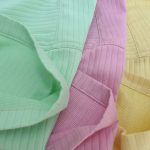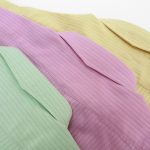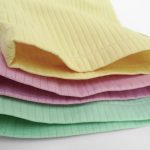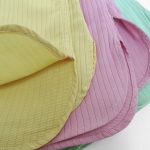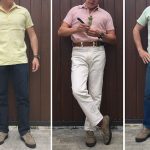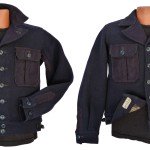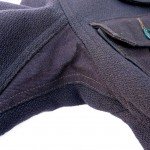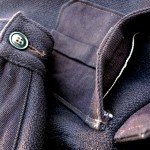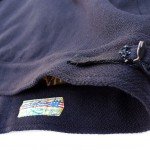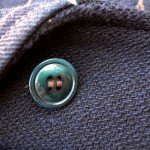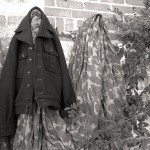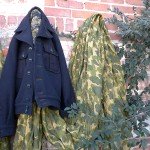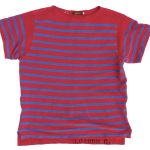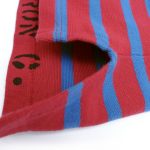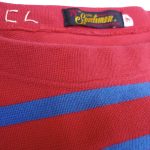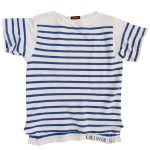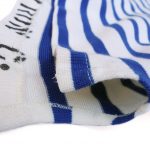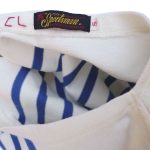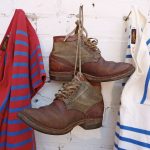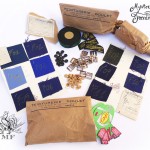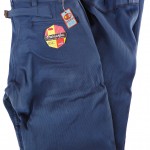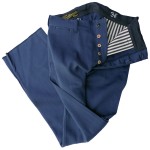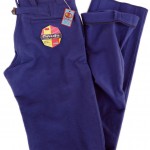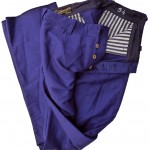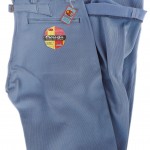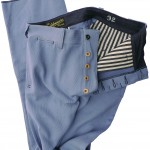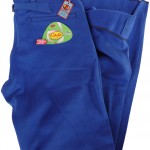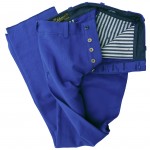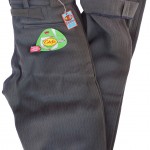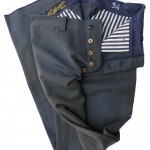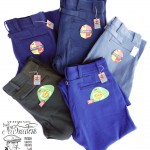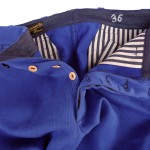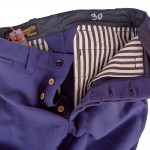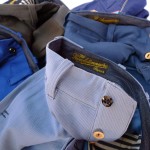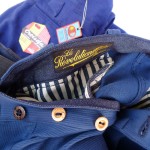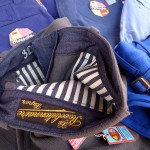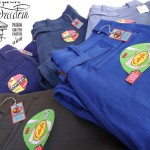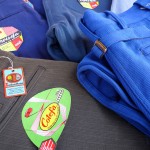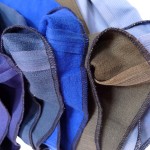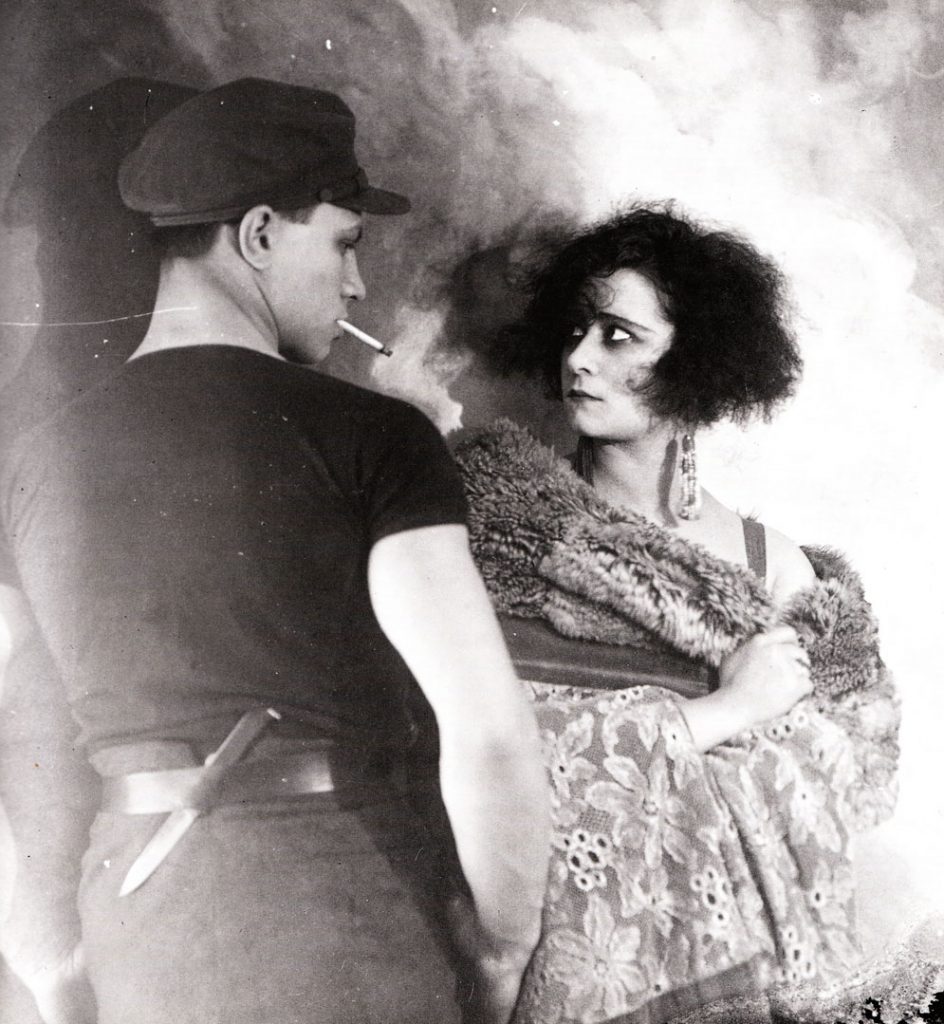
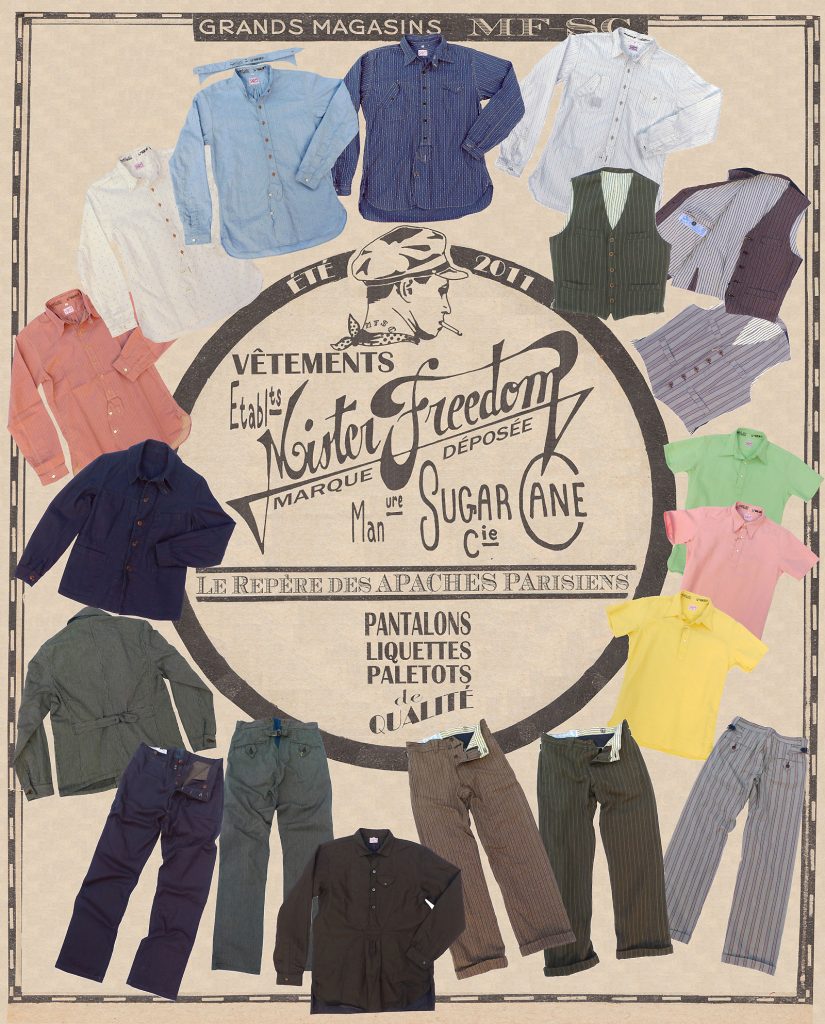 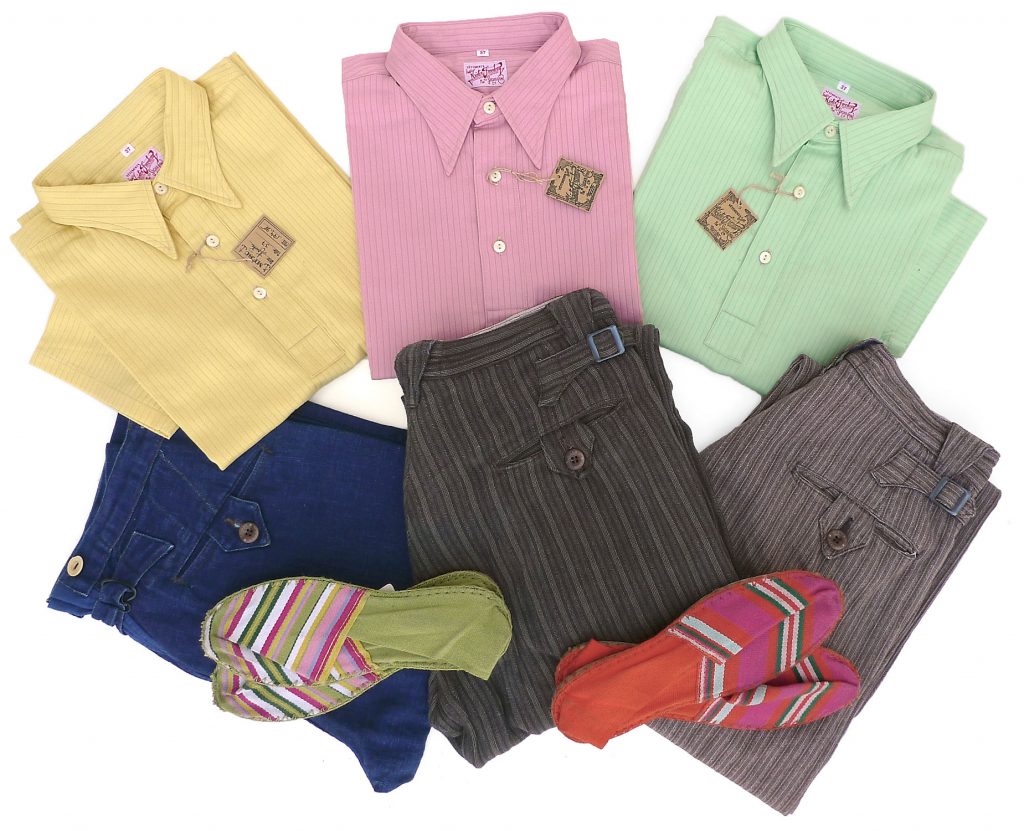 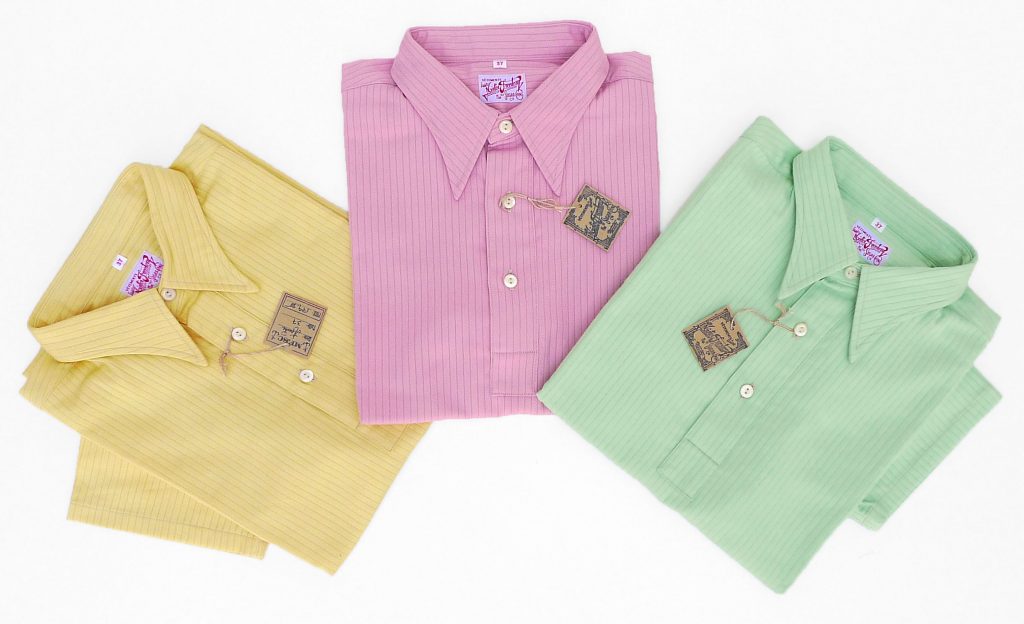 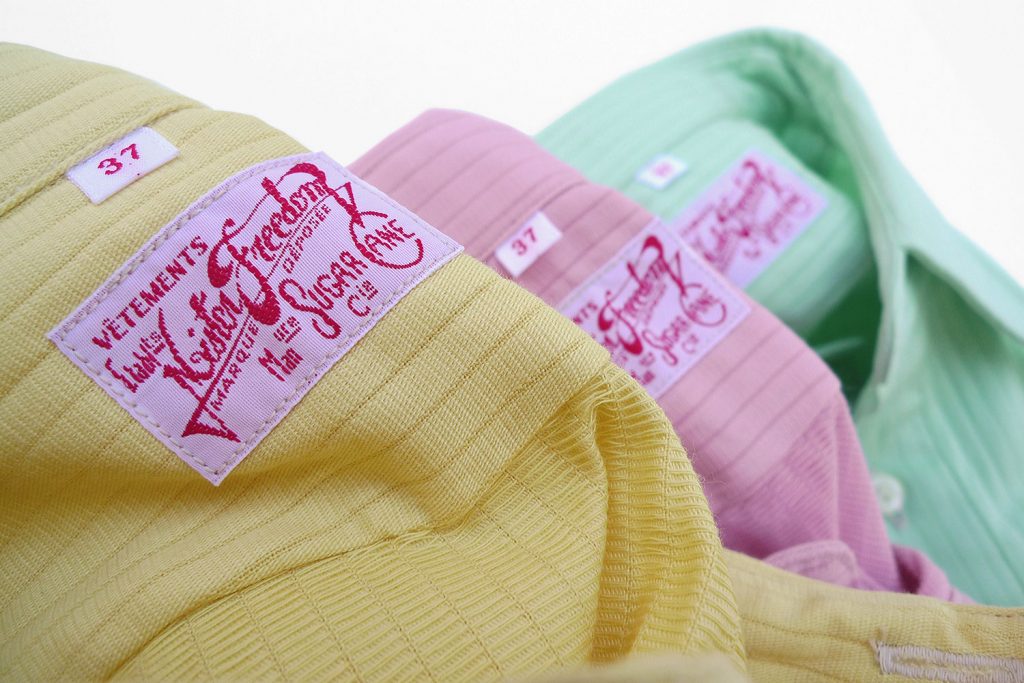
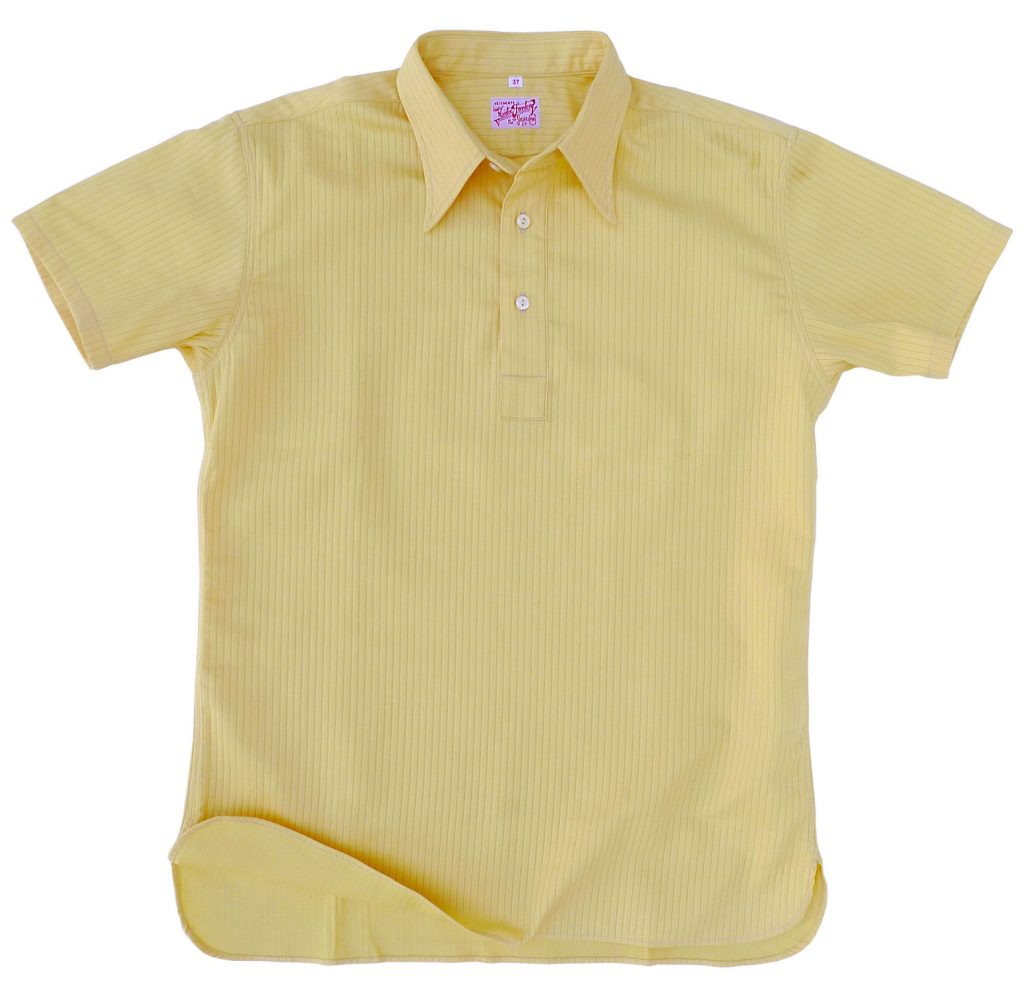
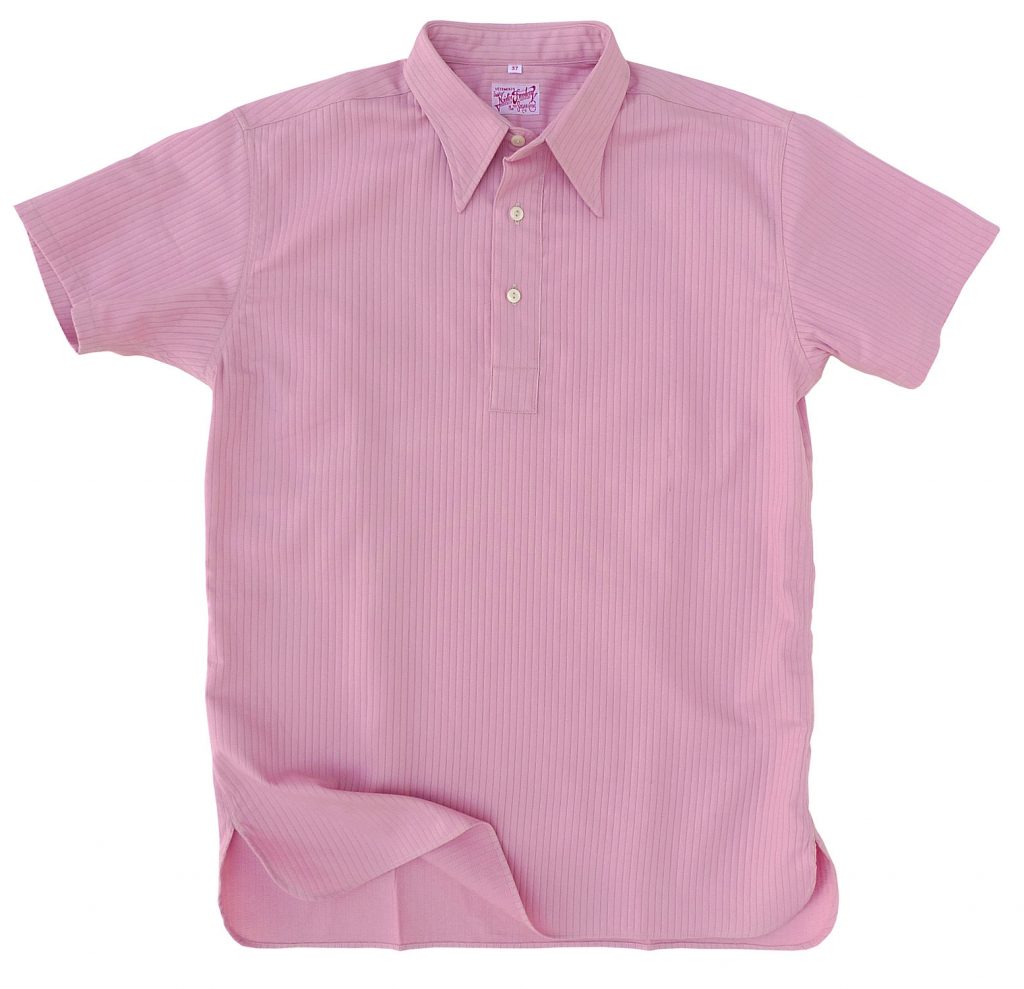
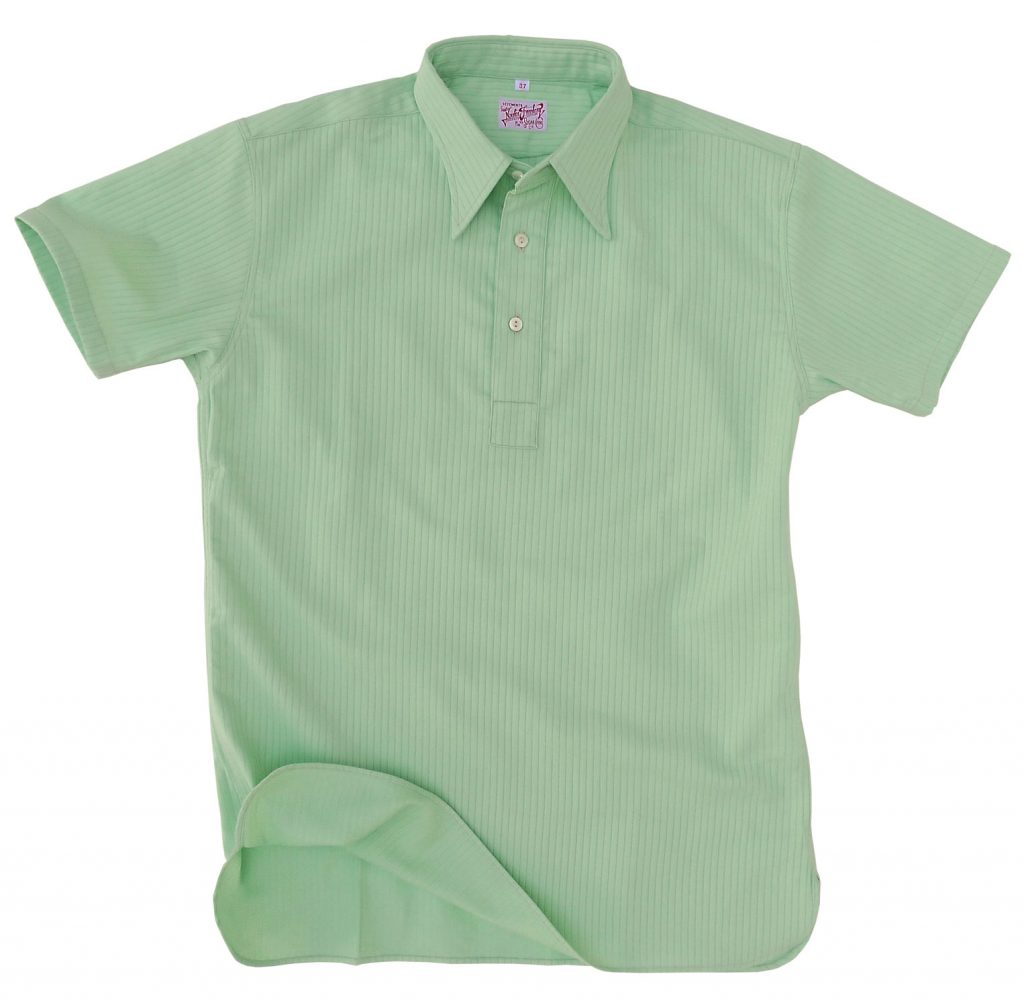
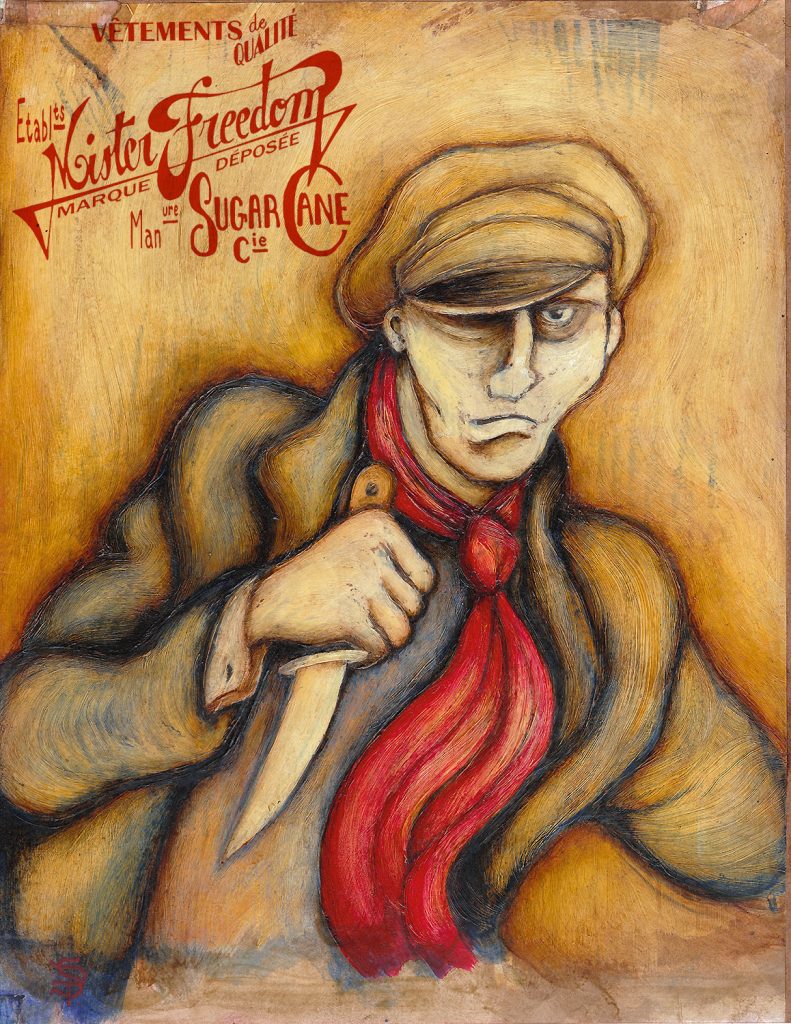 Original oil painting by Patrick Segui ©2011
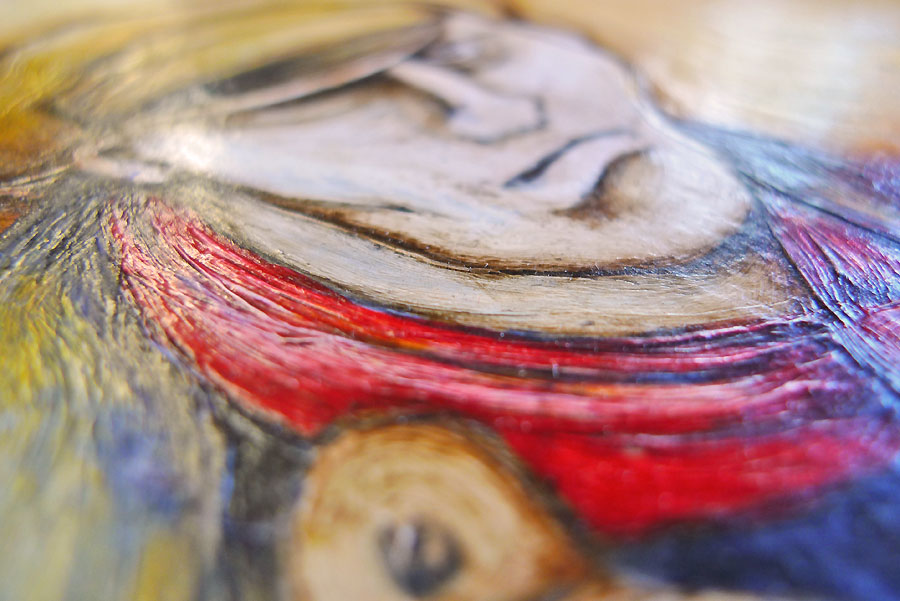
Chemisette GUINGUETTE, piqué cotton.
“Les Apaches” mfsc collection.
Spring 2011
The MF® Chemisette Guinguette is another number that missed the boat… Waterskiing issues again.
This shirt was part of the line-up of our “Les Apaches” Spring 2011 collection, inspired by Paris of the Belle Époque and her infamous bands of flamboyant brigands. Read a brief intro here.
In order to locate an authentic operating guinguette, one can peruse Messy Nessy’s upcoming and promising “Don’t be a tourist in Paris” guidebook. However, to pair your Valseur with a lively partner, the Chemisette Guinguette is the ticket!
A bold move at the time (this was released in 2011, heydays of rugged denim workwear in the flourishing ‘Heritage’ movement), we opted for three jazzy color options of a fancy woven piqué fabric, 100% cotton, developed from a vintage 1920’s French polo shirt.
Time seems to alter the relevance of clothes when collections are designed from a pure flavor-of-the-month perspective, one of the evident downfall of fast fashion. Well, seven years later, we still dig these polo shirts and the pastel palette.
Whether mixing them with our latest Gypsy Blues duds, going for a 60’s vibe with a wheat Californian Lot.74 and Breezer combo, opting for a preppy look with some of our Continental Trousers or Sportsman Chinos, or cruising Yachting-style around the marina with white slacks, the Chemisettes Guinguette are versatile menswear classics, à la MF®.
The Chemisette Guinguette is designed in California by Mister Freedom® and manufactured in Japan by Sugar Cane Co.
Note: The chemisettes pictured in the fit pix have been extensively worn/washed, resulting in heavy color fading.
For more Art from Patrick Segui, the talented fella responsible for the amazing original painting featured on the MF® “Les Apaches” box tops, check-out his artist’s blog or his vintage clothing collector’s journal.
FABRIC:
100% cotton, ridged woven piqué, non-stretch, milled in Japan.
Three pastel color options: Yellow, Pink and Green.
SPECS:
* Inspired by vintage 1920’s -1930’s French short-sleeve polo shirts.
* Slim silhouette.
* ¼ sleeves.
* “Hirondelle” collar.
* Arcuate back yoke and rear collar.
* Side slits.
* Narrow ‘French’ side seams.
* Made in Japan.
SIZING:
The Chemisette Guinguette comes raw/un-washed and will shrink to tagged size after an initial cold soak and line dry process. True to size, this polo shirt fits rather slim with zero fabric stretch. I wear a fitted medium, my usual size in mfsc shirts.
Refer to chart for raw/cold soak measurements.
CHART
CARE:
Low maintenance. Machine wash on delicate, cold water, minimal eco-friendly detergent. Line dry. Use of hot water/heat dryer may result in excessive shrinkage.
Available raw (un-washed)
Sizes (French-style shirting sizing)
37 (Small)
39 (Medium)
41 (Large)
43 (X-Large)
Retail: $179.95
A few NOS specimens are still available from www.misterfreedom.com, and the MF® Los Angeles brick & mortar store.
Email sales@misterfreedom.com or call 323-653-2014 with any questions unanswered above.
Thank you for your support.
Christophe Loiron
Mister Freedom®
©2017
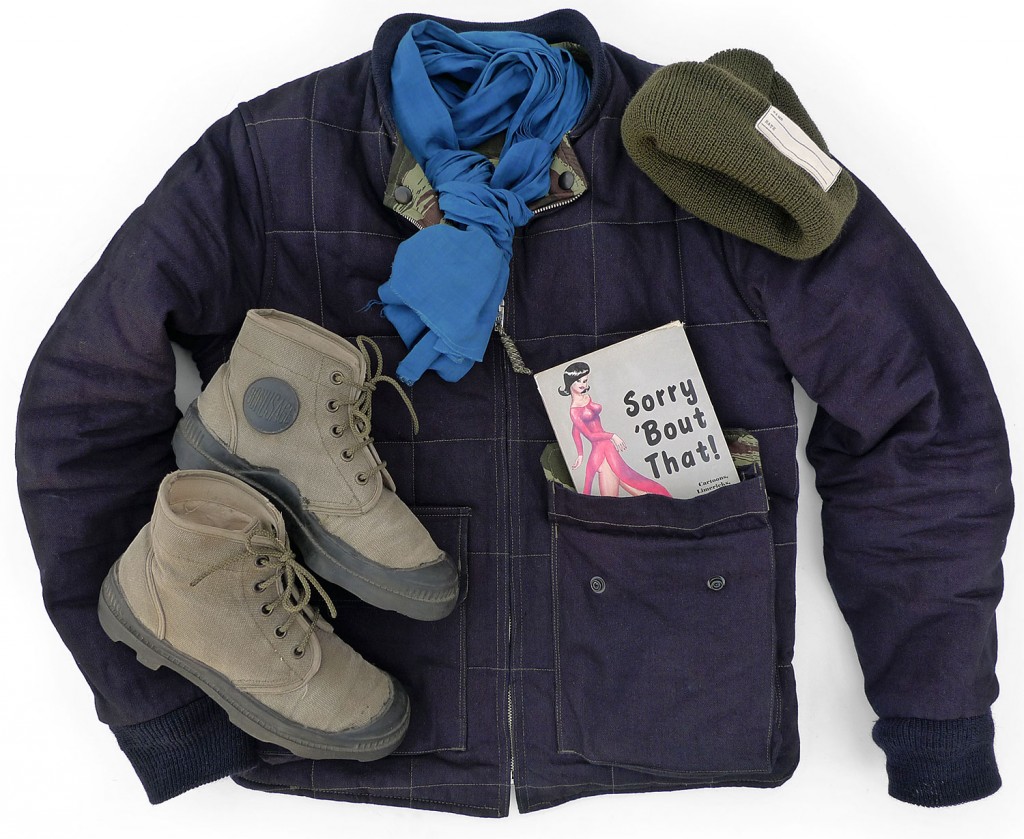
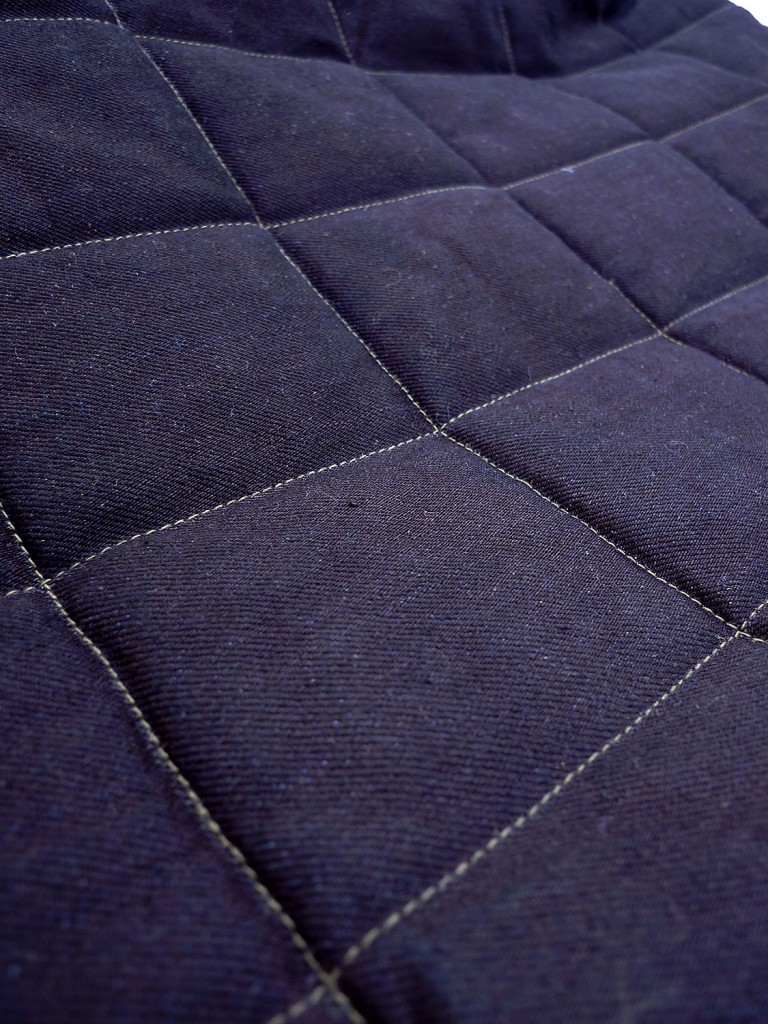 A strong CHANEL influence right here.
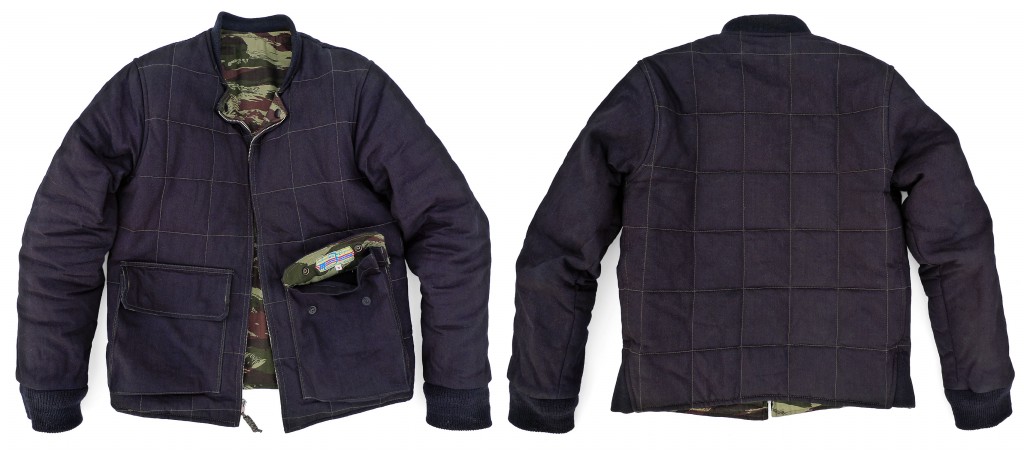
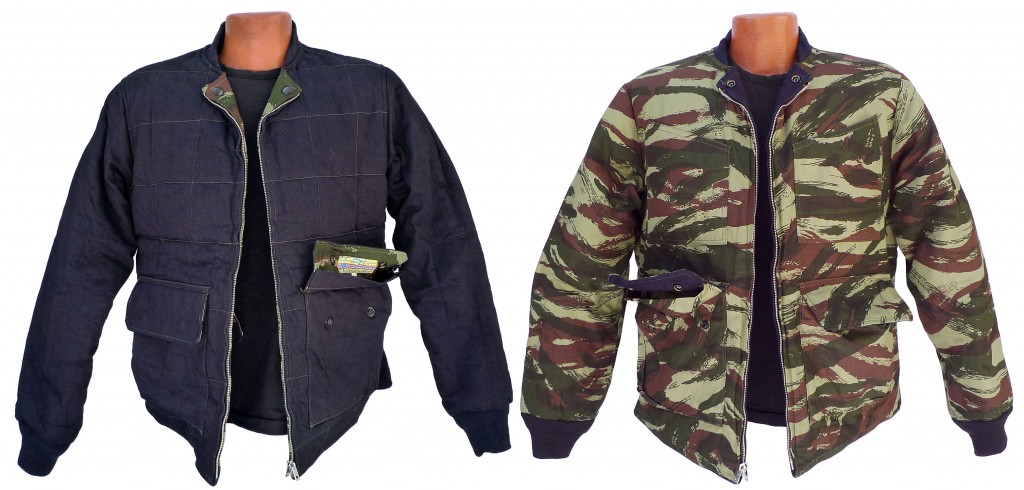
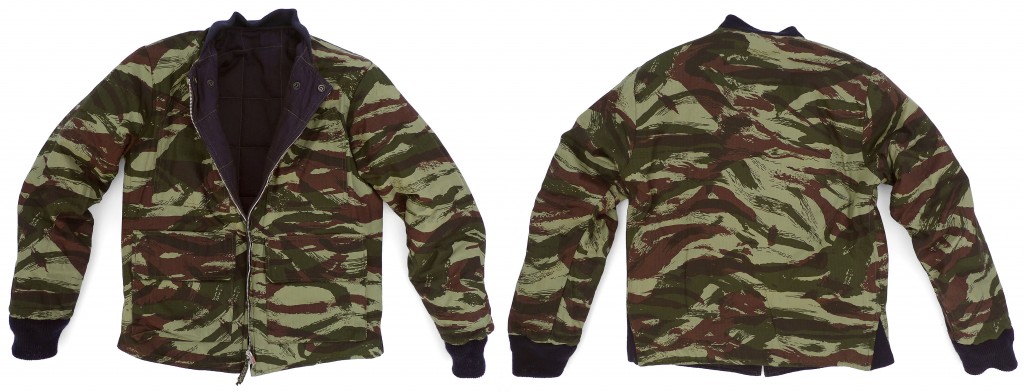
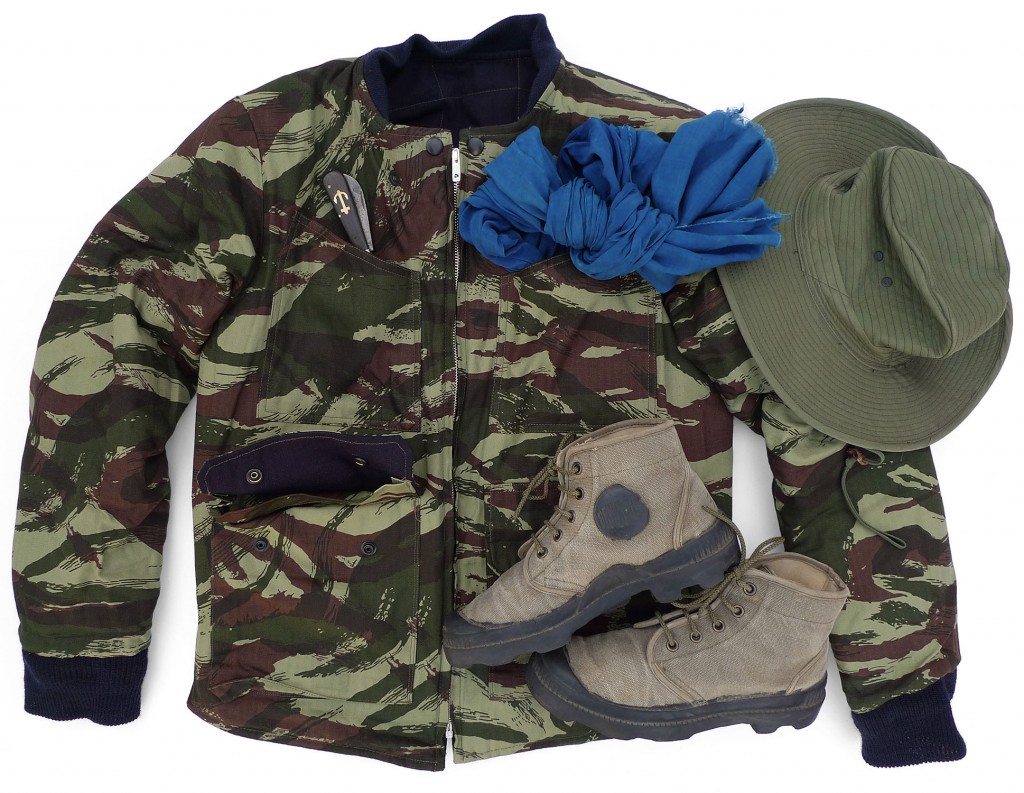
-
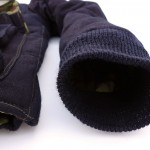
-
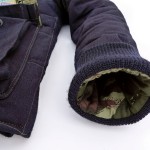
-
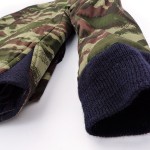
-
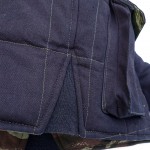
-
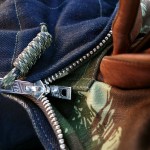
-

-
Le TAP dance, but of course.
TAP Lézard “Vanden” Jacket, reversible quilted indigo twill x lizard camouflage.
SAIGON COWBOY Fall 2015
Following the release of the Mister Freedom® CDO Jacket, and in a similar Hmongs meets Commando vibe, here is the “Vanden” Jacket. This number will be the final addition to our “Saigon Cowboy” collection, wrapping our Spring and Winter 2015 South East Asia adventure.
Some quick semantics first…
If TAP stands for Troupes Aéroportées (Airborne troops, notorious for their tenue bariolée ‘lézard’), the name “Vanden” is a reference to Roger Vandenberghe. A French military legend, Vanden, as his peers called him, lead the famed Commando N°24 known as the Tigres Noirs (Black Tigers), one of the 45 units making-up the 5,400 men-strong Commando Nord Viet-Nam (1951-1954). Adjudant-Chef ‘Vanden’ would become one of the most decorated non-commissioned officer of the French Army, with most of his decorations earned during the Indochina conflict.
Strategic precursors of the CIA-devised CIDG paramilitary groups that would later take over with the US involvement in Vietnam, these French commando units consisted of men recruited amongst ethnic minorities of mountainous regions of Southeast Asia (Hmong, Nùng… of North Vietnam, Laos). Many defecting Viêt Minh personnel also joined the ranks. For either cultural, economic, ideological or territorial reasons, these Vietnamese nationals volunteered to fight alongside the French colonial troops, against the Ho Chi Minh-lead communists.
Routinely infiltrating enemy-controlled territory, these commandos often opted for uniforms incorporating NVA (North Vietnamese Army) gear, ‘black pajamas’, Chinese military quilted vest, headscarves, dark indigo-dyed garments and other un-conventional local favorites… as can be seen on period photography.
After flirting with death on countless perilous ops, Vanden was to meet his fate in his sleep, assassinated in 1952 by one of his own, a Viêt Minh gone-rogue recruit of the N°24 commando…
For more on that, francophones can refer to “Vandenberghe – Le Commando Des Tigres Noirs – Indochine 1947-1952” by Charles-Henry De Pirey (ISBN:9782914086059).
Photos of Vanden’s Black Tigers courtesy of “PR” on this blog.
Photo of Viet Minh prisoners courtesy of this site.
Photo of night river patrol ©Raoul Coutard, as featured in the book “Guerre Morte” (1954) (ISBN: B00WL1YZIE)
-
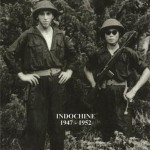
-
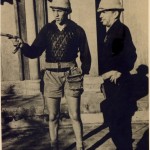
-
Adjudant-chef Roger Vandenberghe Commando N24
-
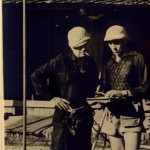
-
Vanden Commando N22
-
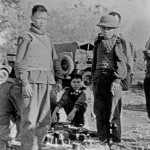
-
Viet Minh prisoners, Chinese quilted vests.
-
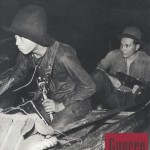
-
Night river patrol, 1950’s Indochina (Photo Raoul Coutard)
-
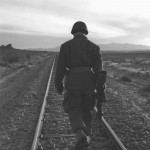
-
4e Regiment d’Infanterie, Algerie, veste matelassée type I
-
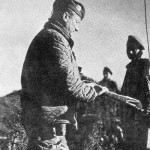
-
LCL Jeanpierre Algerie (1958), veste matelassée type II
Now comes our loose interpretation of all this…
The Mister Freedom® ‘Vanden’ jacket is by no means a replica of authentic Indochina period uniform, but rather a respectful attempt to link History with contemporary wearables, acknowledging a not-so-distant past, lest we forget. This jacket is an original garment that blends vintage aesthetics and references, not an endorsement of bygone imperialistic foreign policies, nor a glamorization of warfare.
The usual MF® spin was put on a 1950’s French Army Type 1 veste matelassée (often seen rolled up atop the rucksack during the French Army Algerian campaign, 1954-1962), an NVA black-dyed vest,… and vintage sportswear field gear. The result is an hybrid jacket featuring double indigo twill on one side, and our version of the traditional camouflage lézard introduced with the Garrison Trousers and Caban Peacoat on the other.
This jacket is fully reversible, featuring a “TYE Tokyo” metal zipper with double-sided pull courtesy of Toyo Tailor, the skilled Sukajan makers of the Mister Freedom® Party Jacket, our special Spring 2015 illiterate keyboard cowboy stimulator.
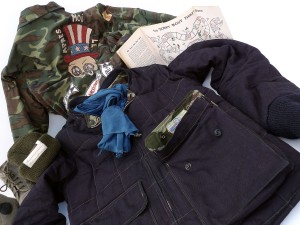 Party Jacket and TAP ‘Vanden’ Jacket The “Vanden” can be worn and zipped-up montagnard side out, or jungle side out. Please note that we left it up too you to customize the pull with your own scoubidou or Paracord tab, as the jacket comes without one.
The “Vanden” features 6 pockets altogether, lower expandable snap flap pockets inspired by French military TAP field jackets, and two camo side chest pockets, quite convenient to store sunglasses or iPhone.
The wool knit cuffs and collar band are mil-specs, courtesy of Buzz Rickson’s.
On a somewhat insignificant note, I have come to like the old stretched-out cuffs of vintage jackets that have been through the wringer, and an easy way to achieve that look is to roll-up the knit cuff on the arm part when the weather permits. Once pulled back down, the cuffs will look ‘sloppily perfect’. This defeats the purpose of keeping the wrist section air-tight, triggering the usual slave-to-style issue, be cool or stay warm, for those of us blessed with such First World dilemmas.
The bottom of the jacket features side expansion wool knit gussets, a vintage-inspired detail we already used on the Chiller Vest, an old Mister Freedom® garment from our 2010 “Speed Safe” collection. This features comes handy when the jacket is fully zipped-up and you are at the wheel.
For the inner padding, we opted for a 100% polyester fiber thermal fill, great for warmth but not too bulky to avoid the Michelin Man look. The square-shape quilted pattern is only featured on the indigo side of the body. The arms are not quilted but still feature a thin thermal padding.
The TAP Lézard ‘Vanden’ Jacket is designed in California by Mister Freedom® and manufactured in Japan by Sugar Cane Co.
SPECS:
FABRIC:
Montagnard side: “Double indigo twill”, a very dark (almost black) indigo warp and indigo weft 100% cotton denim twill, 12.4 Oz., white selvedge ID. Milled in Japan.
Jungle side: 100% cotton HBT ‘lizard’ camouflage fabric, milled and printed in Japan.
Inner padding: 100% polyester fiber thermal fill.
DETAILS:
* Inspired by 1950’s Indochina War military gear and vintage outdoor garments.
* Fully reversible.
* 4 bottom expanding pockets with snap flap, with two extra chest pockets on the lizard side.
* 1950’s sukajan style reversible “TYE Tokyo” metal zipper with double pull tabs.
* 100% polyester fiber filling with minimal ‘puffiness’.
* Mil-specs wool knit cuffs, collar band and side expansion gussets.
* Square-shape quilting pattern on the indigo side.
* Olive green 100% cotton thread.
* Snap down collar lapels.
* Concealed woven Saigon Cowboy label stitched inside pocket flap.
* Made in Japan.
SIZING/FIT:
The “Vanden” Jacket comes raw/unwashed and we recommend an initial cold soak (~30mn) with occasional hand-agitation to insure total immersion. Spin cycle and line dry. This jacket is quite bulky and heavy when wet, so do not attempt a full washing cycle as this might damage both your jacket and your washing machine.
This jacket is true to size, and a Medium (38) fits like a snug Medium by mfsc standards. I wear a Medium with enough room for a sweatshirt or denim jacket underneath. This is a rather fitted jacket, depending of course on your build, proportions and choice of size.

Please refer to sizing chart for cold rinse/line dry approximate measurements.
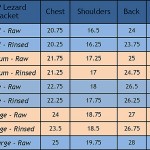
CARE:
Launder when hygiene dictates and common sense prevails.
We recommend professional cleaning in your local eco-friendly facility. If not practical, hand wash or machine wash on DELICATE in large capacity washer to avoid damaging both jacket and machine. Cold water, delicate cycle, eco-friendly mild detergent and line dry. We recommend turning indigo blue/denim garments inside out to avoid marbling when washing. Un-zip jacket before washing.
Patina will develop according to activities and frequency of wear.
WARNING: The double indigo twill will naturally bleed, and minimal color transfer to light color garments or furniture is to be expected. Indigo transfer will wash-off overtime.
Available RAW/unwashed
SIZES:
Small (36)
Medium (38)
Large (40)
X-Large (42)
XX-Large (44)
RETAIL $699.95
Soon available from www.misterfreedom.com, fine retailers around the World, and our Los Angeles brick & mortar store.
Email sales@misterfreedom.com or call 323-653-2014 with any questions unanswered above.
Thank you for reading and for your support,
Christophe Loiron
Mister Freedom® 2015
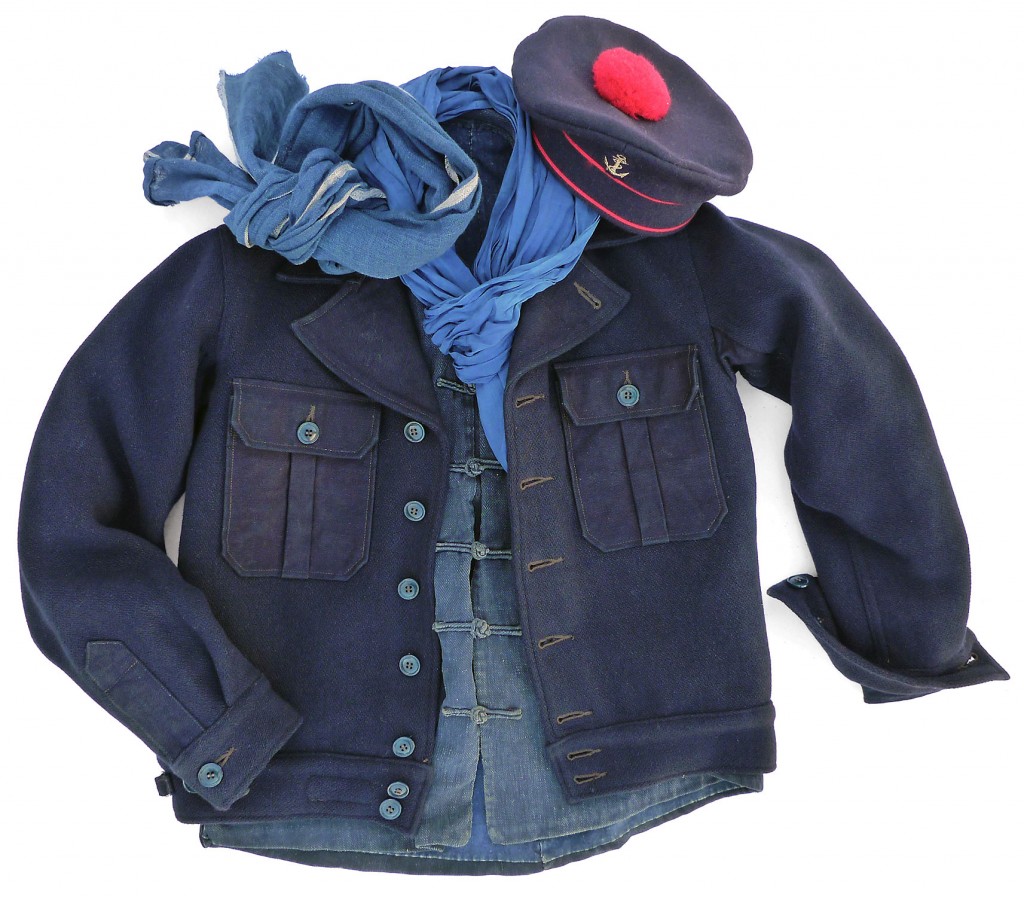

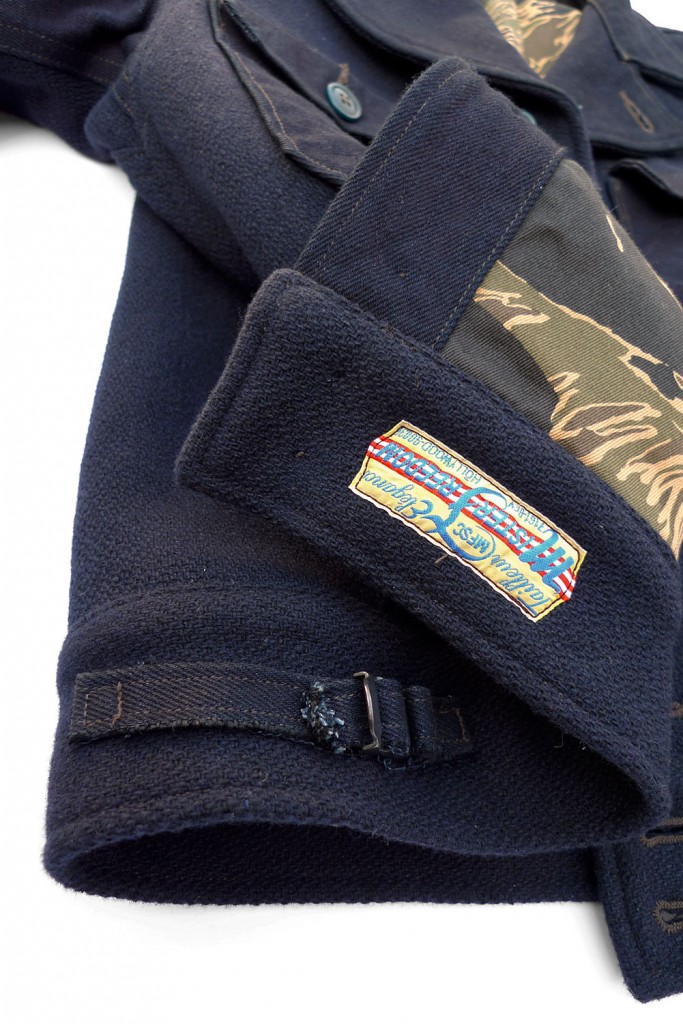 And a free bowl of soup to the first reader who notices the upside down woven label on this early sample. Shipping not included. 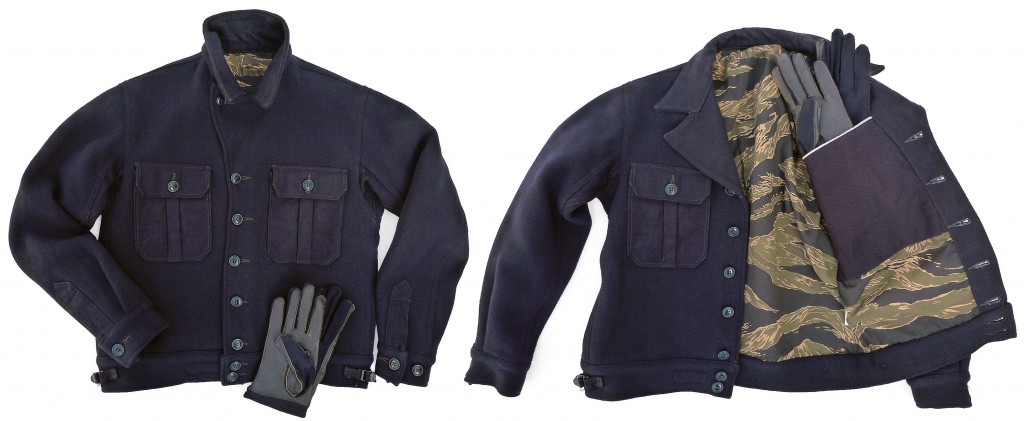
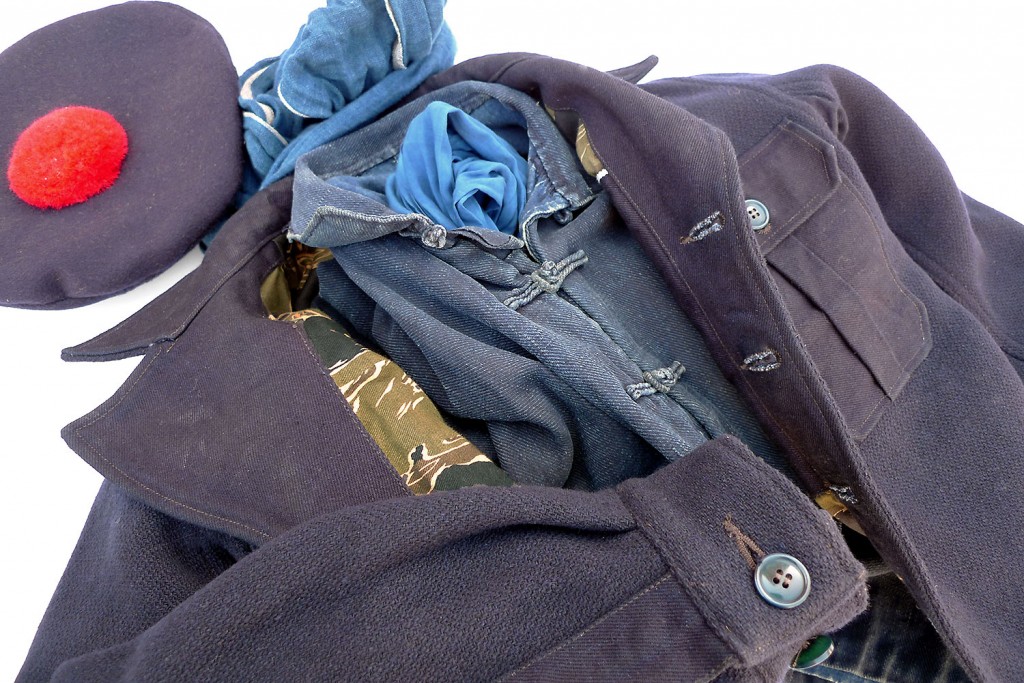
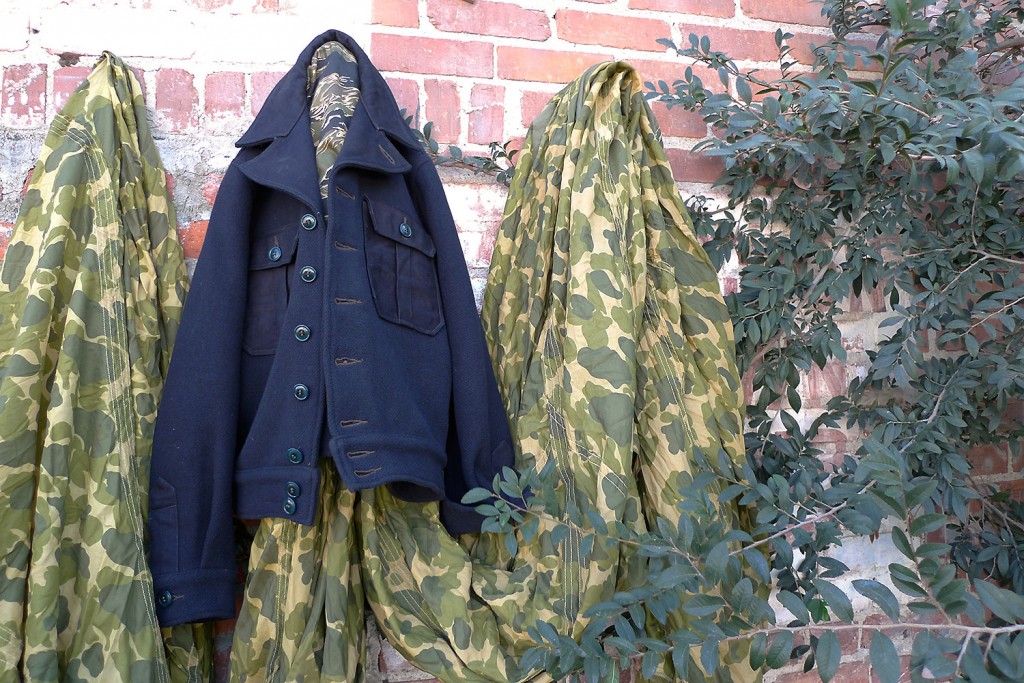
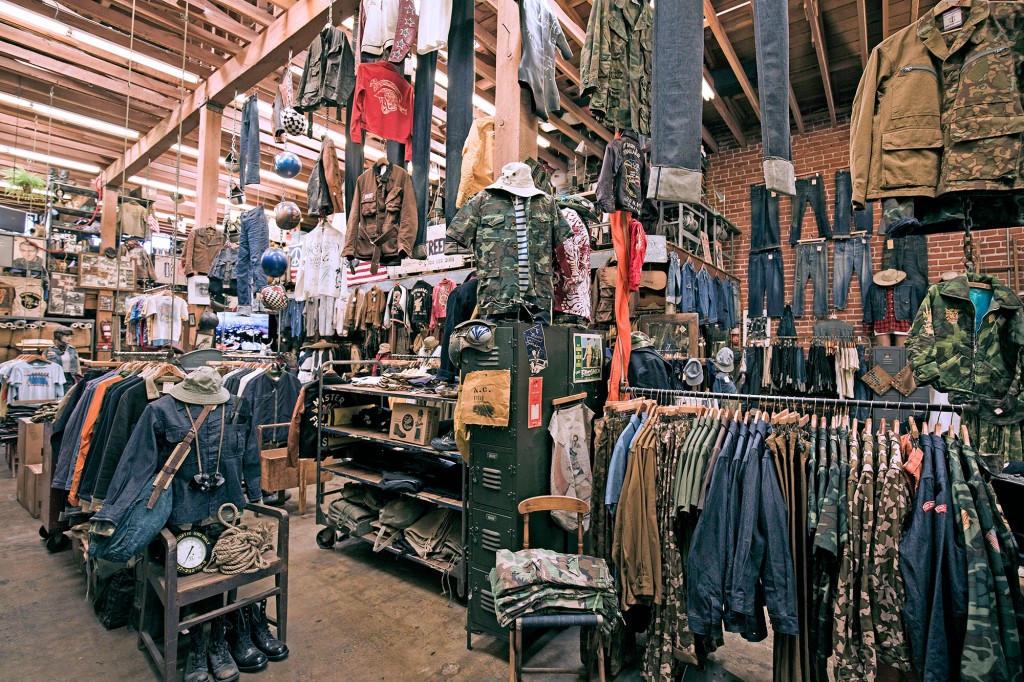 Mister Freedom® HQ at 7161 Beverly Blvd., Los Angeles, CA 90036, USA. (Photo Tadashi Tawarayama 2015) CDO Jacket, Melton wool x indigo cotton twill combo
Saigon Cowboy Fall 2015
Following the recent release of the Mister Freedom® Caban Peacoat, and pushing further up the meanders of our Saigon Cowboy arroyos, here is a new number out of the bush: the ‘CDO Jacket’.
CDO stands for Commando, a respectful reference to Commandos Marine, the famed elite assault troops of the French Navy.
During France’s involvement in the Indochina War, mid-40’s to 1954, several Commandos Marine (Commando François, de Montfort, Jaubert, Tempête and Ouragan) joined forces with South Vietnamese troops on numerous operations from the Gulf of Siam to the Gulf of Tonkin. Whether navigating South China Sea waters, maneuvering Tonkin and Cochinchina waterways, or joining riverine operations around Annam deltas with the Divisons Navales d’Assaut (DINASSAUT), the Fusiliers Marins et Commandos (FUSCO) played a very active role from the early stages of the conflict. These commandos were composed of both supplétifs (enrolled pro-French Indochinese nationals) and CEFEO troops from continental France.
For units assigned to Fleuve (Brown-water Navy) or Mer (blue-water Navy), deployments involved all kinds of fun tropical aquatic activities such as exhilarating adventures in leech-infested and mosquito-ridden mangrove. Cruising aboard US-made landing craft vessels recycled from WW2, or rudimentary river patrol Swift Boat-type precursors, many of these French commandos never reached the end of their 18-month tour.
Due to field isolation, some of these units were left to their own fate and judgement, often pictured sporting eclectic outfits more adapted to local conditions and personal preferences than showing concern for strict military regulations.
For those with a yen for vivid military slang, brown-water French sailors, ‘marins en kaki’ in Indochina, were poetically nicknamed ‘chie dans l’eau” by their airborne or infantry counterparts. ‘Dans l’eau’ translates to ‘in the water’. The verb is for you to guess.
In subsequent years, in and about Vietnam’s 12,000 miles of coastal terrain, American soldiers would in turn be instructed to board all kinds of riverine crafts, some actually inherited from the French flotillas, and confront the same Viet Minh (Vietnamese independentists) enemy, relabelled Viet Cong (Vietnamese communists) to better celebrate the pursuit of the Cold War festivities…
-
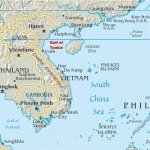
-
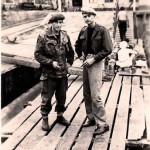
-
Cdo Jaubert 1950 (Courtesy JY Seven)
-
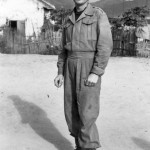
-
CDO Montfort (1949-51) Courtesy Musiolik René
-
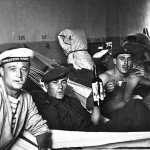
-
CDO Montfort 1951-53 (Courtesy O Walter)
-
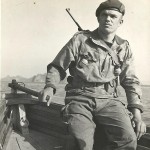
-
CDO Montfort LEMONNIER Louis (Tonkin 1951) Courtesy Sélo
-
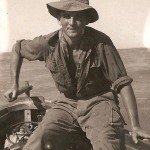
-
CDO Montfort MORVAN Joseph (Tonkin 1951-52)
-
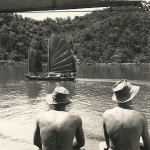
-
CDO Montfort Sélo 1950-52 Courtesy MISPELAERE André
-
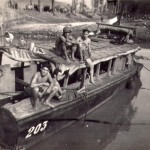
-
WW2 era LCVP, Dinassault crew in Indochina
-
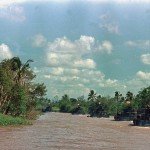
-
PBR 9th Division My Tho River (1968 AP photo)
-
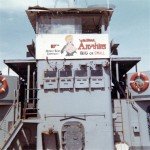
-
LST 97 Heavy Boat Company (1969) Courtesy Tom Poston 154th Transportation Company
Vintage photos courtesy of this Commandos Marine homage website.
Landing Ship Tank photo courtesy of this website.
Back on point.
Our ‘CDO Jacket’ is by no means a replica of 50’s French Indochina military gear, but instead a product of our questionable imagination. It mixes influences from different armies and periods, in order to create a wearable garment suitable for a peaceful 2015 bateau-mouche cruise. This jacket is the result of combining several vintage goodies in the MF® shaker: British Battledress, 1940’s US Army denim utility jacket, 1950’s French tenue de sortie (dress uniform) jackets, outdoor navy CPO-type civvy garments…
If the general pattern of the ‘CDO Jacket’ is adapted from our Spring 2015 denim Utility Jacket, the shell fabric we opted for is new to MFSC. This textured woven woolen fabric is reminiscent of 1960’s-70’s Melton wool CPO navy shirts, the common civilian kind we are all familiar with, featuring the classic black plastic anchor buttons. This fabric is different from the dense Kersey-type wool of early peacoats, or from the wool serge of typical 1940’s battledress/Ike jackets. It is more loosely woven, without the softer brushed finish, and with the woven pattern clearly visible from both sides.
-
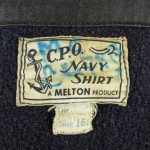
-
Vintage Melton navy CPO shirt
-
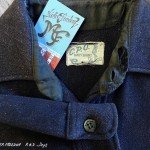
-
1970’s wool CPO navy shirt
‘Black’ indigo is an important feature of Vietnam’s indigenous Degar People traditional attire, both men and women, in the form of dark loincloth, sarongs… Seemingly out of left field but as a subtle Montagnard reference , we have combined our navy blue woven wool fabric with the 16 Oz. indigo warp x black weft twill of our Caban Peacoat, in contrasting textures but blending colors. The two chest pockets, underarm gussets, and more importantly the collar top part, are all cut from that indigo cotton twill. The rest of the body is made of Melton-type wool. Those allergic to wool will appreciate the ‘CDO jacket’ collar not rubbing their neck.
To add another layer of historical references, our ‘CDO Jacket’ is fully lined with Buzz Rickson’s 100% cotton twill, printed with TSP (Tadpole Sparse Pattern) gold tiger stripe camouflage, the same fabric featured on the MF® Tiger Board Shorts.
Oh, and because we have way too much time on our hands, we also thought of hand-dyeing corozo wood buttons in our Mickey Mouse indigo vat, creating quite an impression in the neighborhood.
-
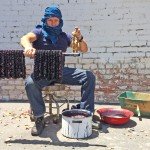
-
Loiron of Arabia
-
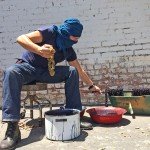
-
The fun begins when the strand breaks
-
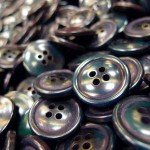
The ‘CDO Jacket’ is designed in California by Mister Freedom® and manufactured in Japan by Sugar Cane Co.
SPECS:
FABRIC:
Shell: Combination 100% wool, Melton-type, textured weave and 100% cotton twill, 16 Oz. indigo warp x black weft with white selvedge ID. Both fabrics are milled in Japan.
Lining: Buzz Rickson’s 100% cotton twill, printed with TSP (Tadpole Sparse Pattern) gold tiger stripe camouflage. Made in Japan.
DETAILS:
* Revisited general pattern of the classic US Army M1941 HBT Utility jacket.
* Contrasting fabric texture combination, melton wool and indigo cotton twill.
* Battledress-type waist length.
* Side cinch straps, mil-specs metal sliders.
* Concealed inner chest pocket.
* Indigo cotton twill top collar for neck confort.
* Indigo twill selvedge visible on inside pocket fold.
* ‘Bat sleeve’ pattern with indigo twill gusset for arm hole comfort.
* Expanding box pleat chest pockets, indigo cotton twill.
* Indigo-dyed corozo wood buttons.
* Adjustable wrist cuffs.
* ‘Oxidized’ black 100% cotton thread stitching.
* MFSC ‘tailleur‘ woven label on the inside waistband.
* Made in Japan.
SIZING/FIT:
Our ‘CDO Jacket’ comes unwashed, is true to size, and meant to be professionally dry-cleaned.
However, for the adventurous few who like a bit of ‘torquing and roping’ in their fabrics, the jacket can be initially soaked in cold water for 20-30 mn, briefly hand agitated, and spun dry. Shape it a bit to your body by wearing it briefly before hanging and letting fully dry overnight. This process is not intended to shrink the jacket, but instead to ‘tone down’ the off-the-shelf look inherent to raw garments in general. The necessity of this step is left to everyone judgement and is merely a subjective suggestion.
Unlike its denim Utility Jacket predecessor I had opted to size down with, I wear a medium (38) in the CDO jacket.
Please refer to sizing chart for measurements.
 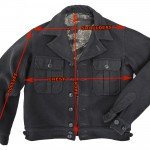
CARE:
Professional dry-cleaning or hand-wash and hang-dry. Do NOT use hot water or throw the jacket in a dryer.
Available RAW/unwashed
SIZES:
Small (36)
Medium (38)
Large (40)
X-Large (42)
XX-Large (44)
RETAIL $629.95
Available from www.misterfreedom.com, our Los Angeles brick & mortar store, and fine retailers around the World.
Email sales@misterfreedom.com or call 323-653-2014 with any questions unanswered above.
Thank you for your support.
Christophe Loiron,
MF® 2015
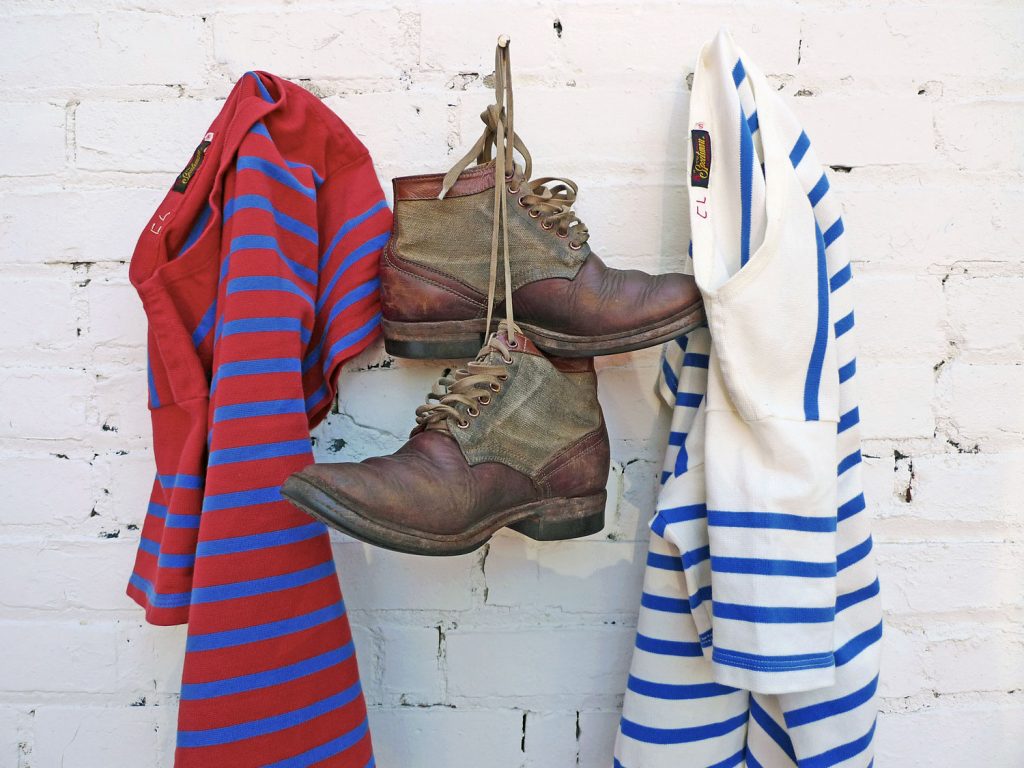
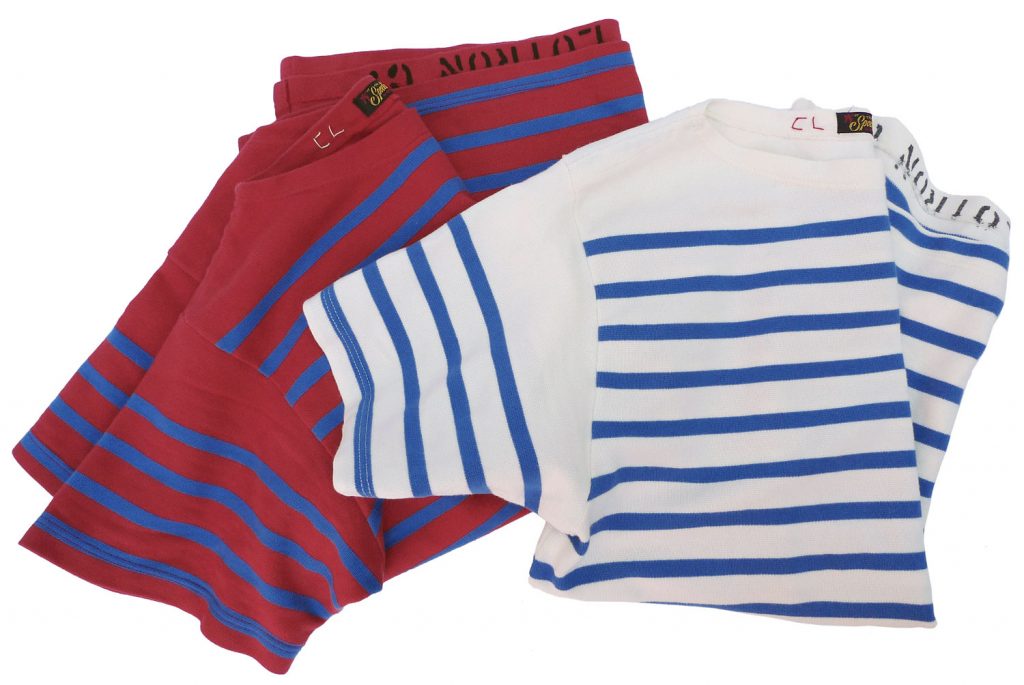
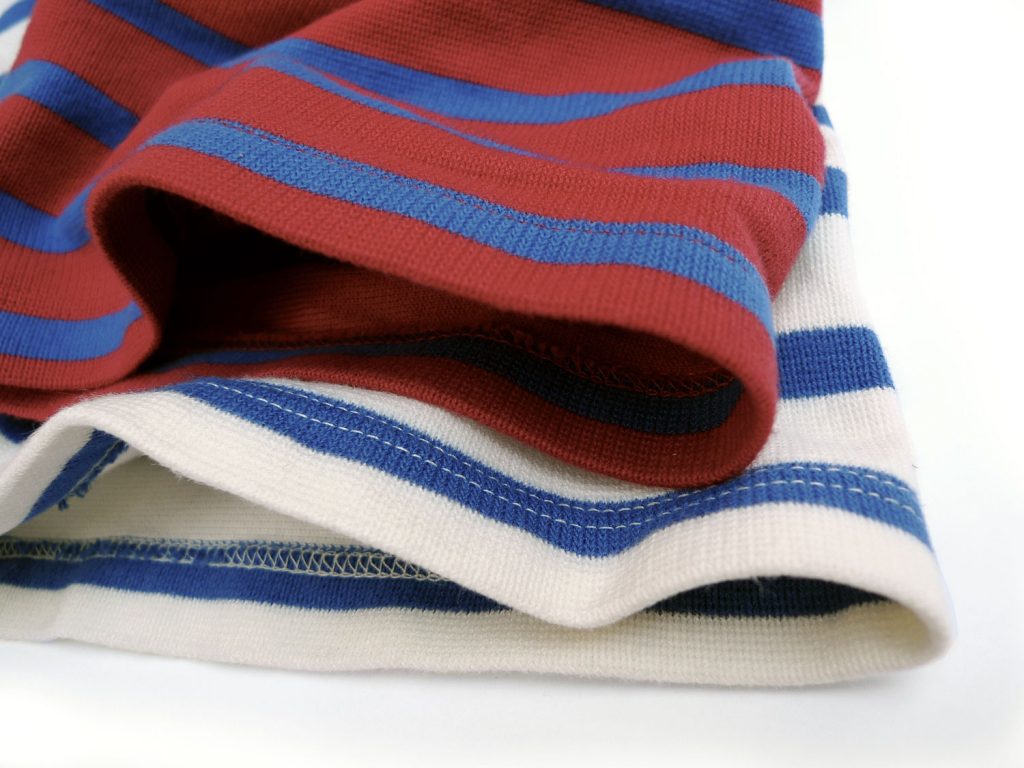
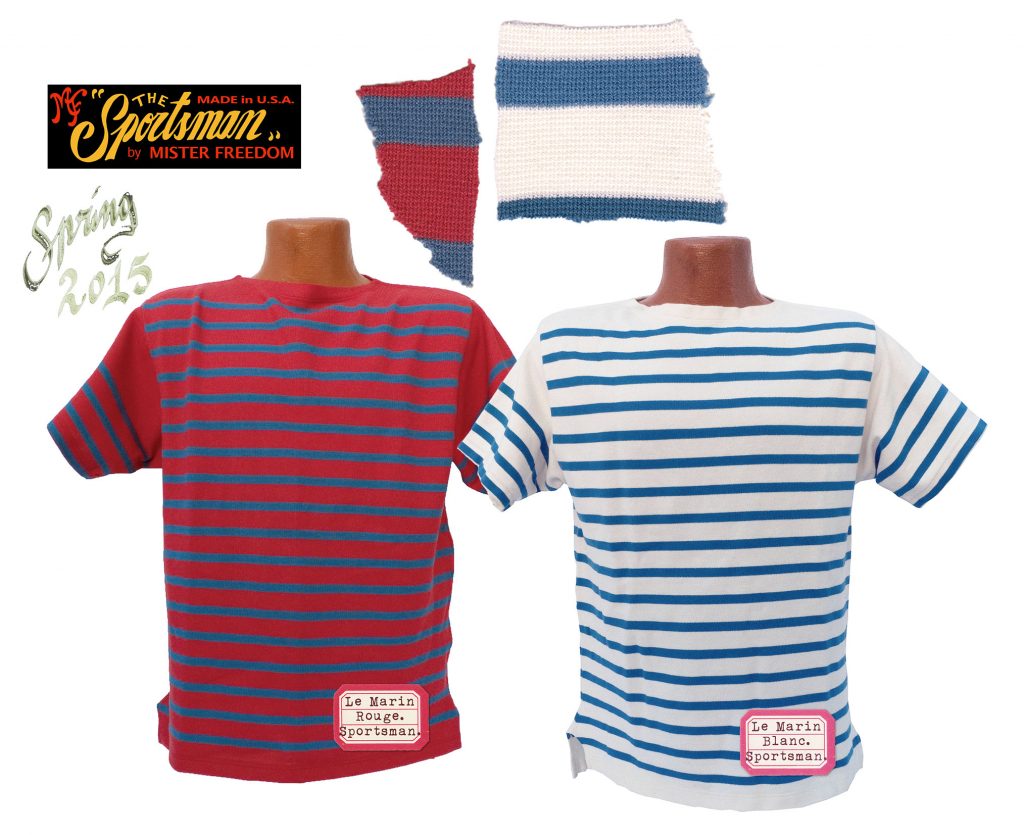
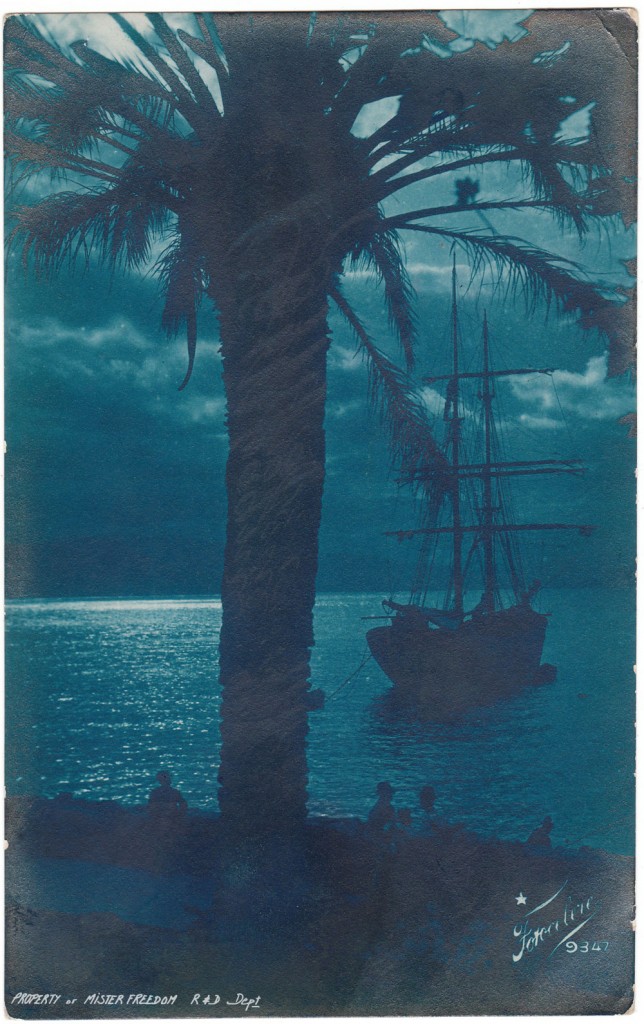
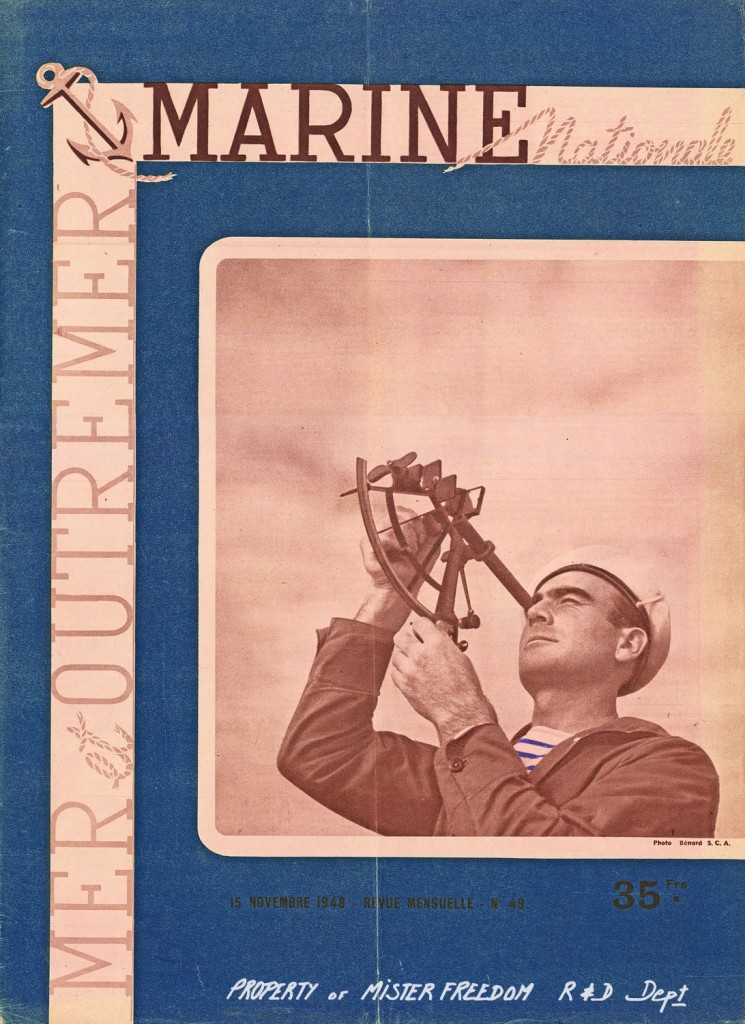
Tricot Marin, Made in USA
Sportsman Spring 2015
Although stripes have been associated through the ages with outcasts, demons, deprivation of personal freedom and other fun stuff, it is argued that the contemporary popularity of that specific geometrical pattern is anchored in the New World of the late 1770’s… During the American Revolution, stripes became a reference to the thirteen red and white borders of the Patriots’ flag. For the revolutionaries of the original thirteen colonies, sporting and displaying striped patterns symbolized an allegiance to Independence from the Old World, the rejection of Britain’s authority. The stripes of Liberty versus the Crown of England…
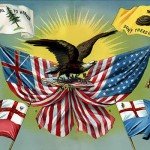 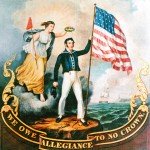 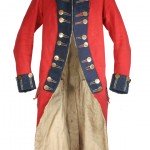
The French, never missing an opportunity to aggravate the Brits, militarily supported and backed the rebellion of the colonies, recognizing the United States of America as a new independent nation in 1778. Some ten years later, France got busy with its own Revolution. In 1789, a ragtag group called the Sans-Culottes made the bulk of the French revolutionaries troops fighting the French monarchic regime. Contrasting with the fancy knee-length breeches aristocrats wore (culottes), their rugged outfits often featured a mixture of unfashionable stripes.
Today, on either side of the Atlantic, no celebration of the French or American Revolution would be complete without red, white or blue stripes.
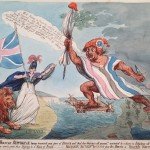 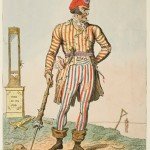  
The origin of the association of stripes with seafaring apparel, from the French tricot rayé to the Russian telnyashka, is also speculated about, but seems to have roots in the middle of the XVII Century as period paintings of naval battles tend to suggest. The keen eye will spot stripes on deck, swashbuckling away.
Before the familiar blue and white combination known today, the earlier seamen jerseys appear to have featured red and white stripes. Private purchase at the time, these striped undershirts were reserved for the lower echelon of naval hierarchy, the hard-working swabbies and quartermasters, in contrast with the dashing uniforms of the officers.
This unlikely choice of work-wear for sailors might have been a pure practical choice to heighten the visibility of men at sea, whether in the rigging, on deck, or fallen overboard, a sort of safety orange or emergency yellow of the 1600’s. Required submission to the ship’s Captain and the Four Winds, rationing, frequent punishments and strictly enforced discipline made for the harsh life of deckhands, as enviable and glamorous as that of convicts in galleys. Just ask around Pitcairn…
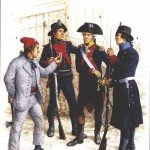 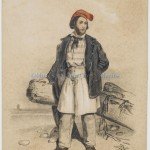 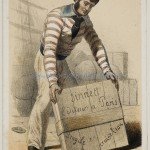 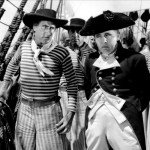 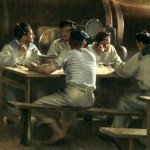
In 1858, the Marine Nationale (the French Navy, aka La Royale) officially adopts the standard Tricot Rayé for its seamen as an under garment. The now-regulated shirt features from 20 to 21 indigo blue knitted stripes, and will only be visible under the V-neck of the vareuse (jumper). An improbable legend has it that the number of stripes symbolizes specific victories of the Napoleonic Wars (1803–1815).
The French word tricot (pronounce tree-koh) refers to the knitting process of the jersey, as the stripes are not printed but knitted. In the early days, French factories that manufactured hosiery (bonneteries) also supplied the striped jersey fabric uniform shirts were made of. Some argue that technical limitations inherent to stocking manufacturing eventually impacted the garments, as shirts looked striped and not solid. Due to variations in shades of dyed or natural yarn batches, mechanically knitted jerseys were easier to keep consistent in stripe patterns than solid color. This seems like a stretch.
It is also said that striped patterns, a common feature in the world of vintage undergarments, served the purpose of breaking the unsightly silhouette of the human body. Centuries later, in liberating retaliation from this prudish repression, Man went on to invent the striped Bikini…
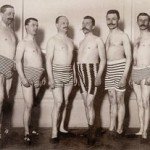 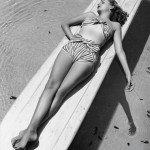
If most of what is known about stripes is pure extrapolation and the truth lost to history, what is well-documented is that nautical symbols have long safely made it to shore. Unlike their Army counterparts, French Navy conscripts got to keep their entire sea bag after the mandatory military service, taking home their uniform including two marinières. Used or vintage ones were dime a dozen in Parisian flea markets until the early 1990’s, easily filtering in the civvy world.
Today, the famous white and blue stripes are mostly associated with France, summertime, fun-in-the-sun, sea-side resorts, yacht clubs, freshwater sailing, fishing, bouillabaisse, beach umbrellas… and fierce menswear fashion courtesy of JPG in 1978.
Stripes… From dweller of the High Seas status to international catwalk apparel, from the backs of Medieval felons to Parisian Apaches gigolos, from Marsouins to bobos, from Saint Malo to Saint Tropez, striped shirts have seen it all.
Coco, Picasso, Bardot, Brando, borders a go-go… Hissez haut, Santiano!
-
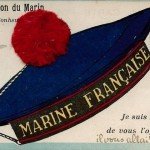
-
Houpette Marine Francaise
-
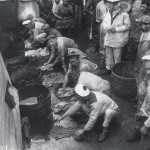
-
French battleship Jauréguiberry laundry day (1913)
-
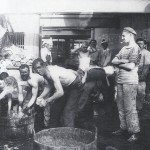
-
Jauréguiberry (1913)
-
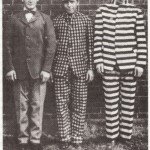
-
Alcatraz (1920)
-
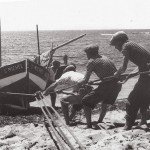
-
Cargese Corsica (1935)
-
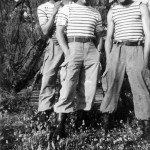
-
STAC Stage Commando marins (1956)
-
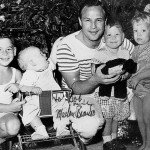
-
Brando (1956)
-
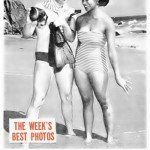
-
Brando Barbara Roberts
-
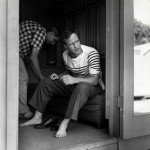
-
Photo Larry Barbier Jr (1954)
-
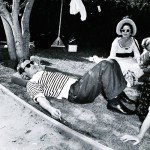
-

-
Brando & Josiane Beranger in Bandol (1954)
-

-
Brando rehearsing for Guys & Dolls (1955)
-

-
Bardot Edward Quinn (1956)
-
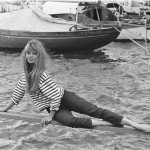
-
Bardot by Loomis Dean (1958) LIFE
-
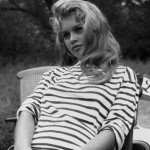
-
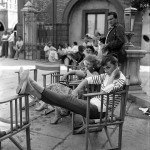
-
Audrey Hepburn (1961)
-
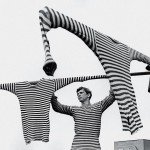
-
Russian Navy telnyashka Photo Sergey Petrukhin (1968)
-
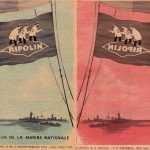
-
If it moves, salute it. If it doesn’t, paint it.
Adding to that landlubber mixture, here is Mister Freedom®’s iteration of the TRICOT MARIN, for Spring 2015.
We opted for 18 stripes for a simple reason: E = mc^2 x u(x_1, 3.14 ,x_n)- f(x) = ex-15%, where u=u(x)+ 6.67*10-11Nm2kg-2 .
According to Antonio, this adds up to 18, quod erat demonstrandum.
Our 18 stripes form a sort of large chest band, horizontally framed by solid parts on the shoulders and bottom. This pattern is a reference to authentic French Marine Nationale jerseys, rather than the fully striped shirts without solid parts often associated with fishermen or ocean rescue. Some of the traditional Armor-Lux or Saint James shirts have that Bretagne nautical vibe. The brand Orcival supplied jerseys to the French Navy for many years.
A solid section is also featured on the sleeves on the MF® tricot marin. Depending on the size of the shirt, the visible solid sections will fluctuate in width, the XXL having a larger solid top section that the XS…
We are using a col bateau (boat neck), a collar pattern specified in the original French regulation code of 1858, insisting with our manufacturer for the curve of the collar stitching, a technical challenge for the skilled machine operator.
The side slits and longer rear panel are also references to original tail of the French Navy tricot rayé. Our 1/4 sleeves, shorter than the government issued shirts are a nod to the common practice of chopping up the sleeves of your jersey for comfort in tropical deployments.
Besides the specific shade of blue and white yarns we selected for our tricot (inspired by a vintage 1910’s real indigo striped jersey from our archives), we also opted for a second color combination, involving a particular red. Not an ‘authentic’ stripe pattern, but legit-looking enough to be part of our Sportsman catalog. This ‘Raschel‘ type jersey knit, a batch specifically woven for us in Japan in 2015, turned out to be the most expensive fabric we’ve had milled to date…
Our “Tricot Marin” is designed in California by Mister Freedom®, and manufactured in the USA from fabric milled in Japan.
References:
* “L’étoffe du diable. Une histoire des rayures et des tissus rayés” (Michel Pastoureau, 2014)
* Musée National de la Marine.
* Cols Bleus.
SPECS:
FABRIC:
100% cotton jersey knit, woven stripe pattern, milled in Japan.
Two color combination options, white/blue and red/blue.
DETAILS:
* Inspired by original Marine Nationale striped jerseys and vintage nautical knit shirts.
* Woven stripe chest band, 18 stripes.
* Boat neck.
* 1/4 sleeves.
* Side slits.
* Rear panel tail.
* Made in USA
SIZING/FIT:
Both color options come unwashed and will shrink to the same size after an initial rinse/dry cycle. The jersey has some minimal mechanical stretch in width, slightly more in length when pulled.
According to your fit preference these can be worn fitted or loose. Although usually a Medium in MF® shirts, I opted to size down and wear a small in the MF® tricot marin, same as the Stanley and Skivvy.
Refer to chart for approximate rinsed/tumbler dry measurements.
 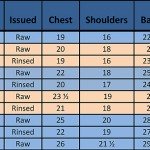
CARE:
Low-maintenance, just throw your tricot marin in the washer/dryer, cold or hot water, delicate cycle. No bleach.
SIZES:
x-Small
Small
Medium
Large
X-Large
XX-Large
Available from www.misterfreedom.com, our Los Angeles brick & mortar store, and fine retailers around the World.
Email sales@misterfreedom.com or call 323-653-2014 with any questions unanswered above, such as “¿Quien es Antonio?”
Thank you for your support.
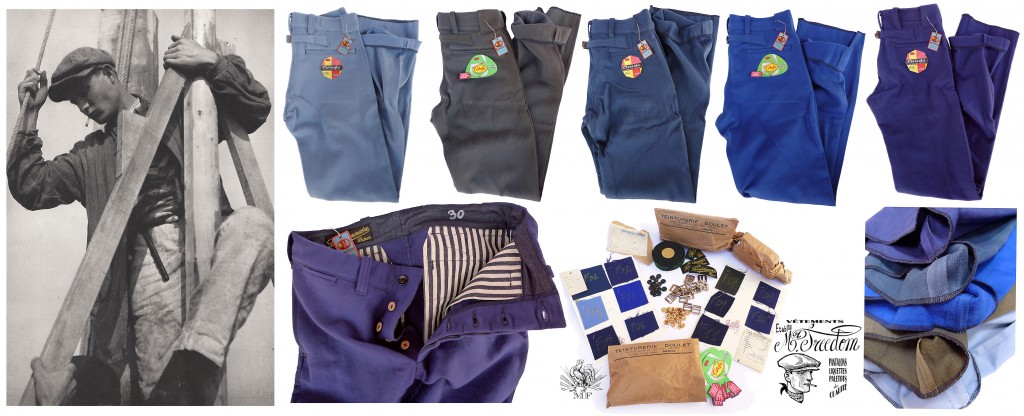
“Le Révolutionnaire” Pantalon de Travail by Mister Freedom®
We scored a very nice lot of 1940’s-50’s New Old Stock (NOS) work-wear fabrics in France, thanks to a dear friend, Monsieur Jérome Girard, ze treasure hunter from Le Zouave
Speaking of vintage hunters friends, Arnaud Bauville from “French CanCan” and Damien from “Le Magasin” are great sources for European vintage 🙂
After their long ship voyage across the Atlantic, we decided to turn these fabrics into work trousers, inspired -but of course- by French work wear, à la façon Mister Freedom®.
-
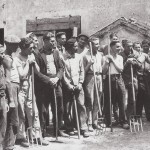
-
Service Civil Rural 1943 (photo courtesy © Phototèque Hachette)
-
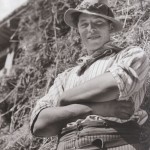
-
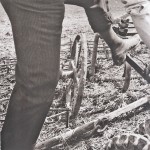
-
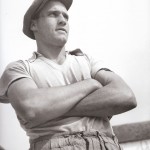
-
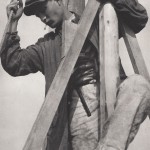
-
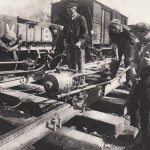
-
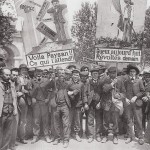
-
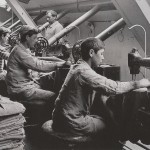
-
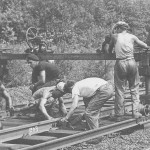
-
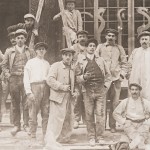
-
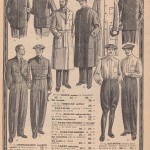
Vintage photos above from here and here courtesy of © Phototèque Hachette, © Collection Roger-Viollet, and © François Kollar “La France Travaille“.
The fabric stock came from a now defunct French teinturerie (dye house) from Amiens. Those rolls were left over and never made it to production. They were intended to be used for typical work jackets and pants to supply local farmers, construction workers, railroad crews, vignerons… with sturdy outfits that would last for decades and get patched up along the way.
Concealed inside the rolls of fabric were the original paper flashers and tags that were supposed to be attached to the finished garments. In this lot, there were mainly 6 different types of fabrics, ranging in color/texture/weight: Light blue to dark indigo, 100% cotton heavy moleskine to 100% cotton Bedford cord types (aka coutil)…
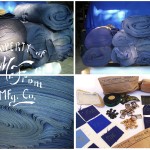
We gathered some vintage trims from our vault as well, such as original vintage 1940’s French unused woven labels “Le Révolutionnaire” (a probable reference to the wide spread ‘Front Populaire‘ Workers strikes of May-July 1936 in France), NOS stripe cotton twill for pocket bags, 1920’s NOS bone buttons for the fly, 1930’s painted metal “X” buttons for waist, NOS 2×1 indigo denim fly & waistband facing… Each pair also has its own original period paper labeling!
Because of limited quantities of yardage, we were not able to make full size runs in all fabrics. We focused on ‘popular’ waist sizes, a few 30, 32, 34 and 36.
To avoid random shrinkage issues, we decided to get all rolls sanforized before cut/sew, in order to keep the fit consistent across all fabrics. However, because of the different weights, the draping (= the way the fabric hangs) varies, and therefore the silhouettes.
As always, “Le Révolutionnaire” are no skinny pants. They are similar in silhouette to our MF® Chinos.
Designed and made in California by Mister Freedom®. Limited edition.
SPECS:
PATTERN: Original MF® pattern, inspired by several work trousers, with a 1930’s~1950’s French work-wear influence.
FABRICS:
All fabrics are selvedge, tonal color ID.
* F01: 100% cotton Bedford Cord, Slate Blue color.
* F02: 100% cotton heavy moleskine, brushed back, “Bleu de Chauffe” color (typical dark navy French work-wear color). They are several batches from the F02 lot, varying slightly in weight and shades. We count them as one same fabric.
* F03: 100% cotton Bedford Cord, light blue-grey color.
* F04: 100% cotton Bedford Cord, Royal blue. Brushed back.
* F07: 100% cotton Bedford Cord, Slate Grey color.
DETAILS:
* Adjustable back cinch strap, with vintage NOS French metal slide buckle.
* Selvedge leg side seams.
* NOS stripe cotton twill pocket bags.
* NOS 3×1 indigo denim waistband and button fly facing.
* 1920’s NOS bone buttons fly closure.
* 1930’s painted metal ‘X’ buttos, French NOS.
* Open bottom leg, overlocked, for your cuffing preferences (36 inches length, uncuffed)
* Two back welt pockets, the left one secured by a French original NOS painted metal ‘X’ button with debossed “*Solide*Elégant*” marking.
* Original 1940’s cotton woven “Le Révolutionnaire” label.
* Original paper labels and flashers form the original Dye House/Factory.
* 100% cotton tonal thread construction.
WASH/SIZING:
All fabrics have been pre-shrunk (Sanforized) before cut/sew, so there should be minimal shrinkage with subsequent wash/dry. Inside-out wash to avoid ‘marbling’. OK to machine dry. Low maintenance, as these fabrics were meant to withstand repeat soiling/wash/wear.
Some of the Bedford cord fabrics will tend to stretch back and forth with wash/dry/wear.
I wear a waist 32, for an ‘anti-fit’ look, which also allows me to break dance around the office, when the boss is not around.
 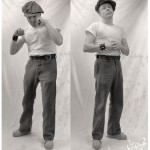 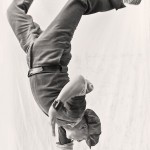
Available sizes Waist 30, 32, 34, 36
Please call 323-653-2014 or Email sales@misterfreedom.com to get yours while they last. Merci for ze support 😉
|










